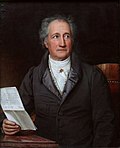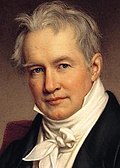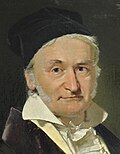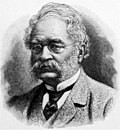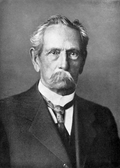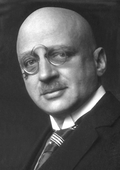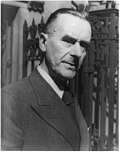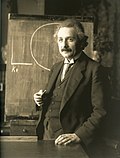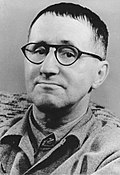History of Germany
- العربية
- Asturianu
- Azərbaycanca
- বাংলা
- Беларуская
- Български
- Bosanski
- Brezhoneg
- Català
- Чӑвашла
- Čeština
- Cymraeg
- Dansk
- Deutsch
- Eesti
- Ελληνικά
- Español
- Esperanto
- Euskara
- فارسی
- Føroyskt
- Français
- Frysk
- Gaeilge
- Galego
- 한국어
- Հայերեն
- हिन्दी
- Hrvatski
- Ido
- Bahasa Indonesia
- Italiano
- עברית
- ქართული
- Kiswahili
- Latina
- Latviešu
- Lietuvių
- Lingua Franca Nova
- Magyar
- Македонски
- Malagasy
- Bahasa Melayu
- Nāhuatl
- Nederlands
- 日本語
- Norsk bokmål
- Norsk nynorsk
- پښتو
- Polski
- Português
- Română
- Русский
- Shqip
- Slovenčina
- Slovenščina
- کوردی
- Српски / srpski
- Srpskohrvatski / српскохрватски
- Suomi
- Svenska
- தமிழ்
- ไทย
- Тоҷикӣ
- Türkçe
- Українська
- Tiếng Việt
- 吴语
- ייִדיש
- 粵語
- 中文
This article may be sandwiching text in accordance with the Manual of Style on use of images. (Learn how and when to remove this message ) |
Part of a series on the |
||||||||||
|---|---|---|---|---|---|---|---|---|---|---|
| History of Germany | ||||||||||
 | ||||||||||
|
Topics
|
||||||||||
|
Early history |
||||||||||
|
||||||||||
|
||||||||||
The concept of
During the
By 1900, Germany was the dominant power on the European continent and its rapidly expanding industry had surpassed
In 1989, the
Prehistory
Paleolithic and Neolithic ages


Pre-human apes such as Danuvius guggenmosi, who were present in Germany over 11 million years ago, are theorized to be among the earliest apes to walk on two legs prior to other species and genera such as Australopithecus.[1] The discovery of the Homo heidelbergensis mandible in 1907 affirms archaic human presence in Germany by at least 600,000 years ago,[2] so stone tools were dated as far back as 1.33 million years ago.[3] The oldest complete set of hunting weapons ever found anywhere in the world was excavated from a coal mine in Schöningen, Lower Saxony. Between 1994 and 1998, eight 380,000-year-old wooden javelins between 1.82 and 2.25 m (5.97 and 7.38 ft) in length were eventually unearthed.[4][5] One of the oldest buildings in the world and one of the oldest pieces of art was found in Bilzingsleben.[6]
In 1856, the fossilized bones of an extinct human species were salvaged from a limestone grotto in the Neander valley near Düsseldorf, North Rhine-Westphalia. The archaic nature of the fossils, now known to be around 40,000 years old, was recognized and the characteristics published in the first-ever paleoanthropologic species description in 1858 by Hermann Schaaffhausen.[7] The species was named Homo neanderthalensis, Neanderthal man in 1864.
The oldest traces of
Between 12,900 and 11,700 years ago, north-central Germany was part of the Ahrensburg culture (named for Ahrensburg).

The first groups of early farmers different from the indigenous hunter-gatherers to migrate into Europe came from a population in western Anatolia at the beginning of the Neolithic period between 10,000 and 8,000 years ago.[13]
Central Germany was one of the primary areas of the
Bronze Age
The settlers of the
By the late
Iron Age
The Hallstatt culture, which had developed from the Urnfield culture, was the predominant Western and Central European culture from the 12th to 8th centuries BC and during the early Iron Age (8th to 6th centuries BC). It was followed by the La Tène culture (5th to 1st centuries BC).
The people who had adopted these cultural characteristics in central and southern Germany are regarded as
Early history: Germanic tribes, Roman conquests, and the Migration Period
Early migrations, the Suebi and the Roman Republic
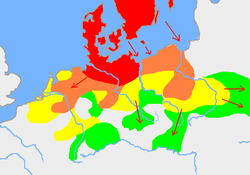
Factual and detailed knowledge about the early history of the Germanic tribes is rare. Researchers have to be content with the recordings of the tribes' affairs with the Romans, linguistic conclusions, archaeological discoveries and the rather new yet auspicious results of archaeogenetic study.[39] In the mid-1st century BC, Republican Roman statesman Julius Caesar erected the first known bridges across the Rhine during his campaign in Gaul and led a military contingent across and into the territories of the local Germanic tribes. After several days and having made no contact with Germanic troops (who had retreated inland) Caesar returned to the west of the river.[40] By 60 BC, the Suebi tribe under chieftain Ariovistus, had conquered lands of the Gallic Aedui tribe to the west of the Rhine. Consequent plans to populate the region with Germanic settlers from the east were vehemently opposed by Caesar, who had already launched his ambitious campaign to subjugate all Gaul. Julius Caesar defeated the Suebi forces in 58 BC in the Battle of Vosges and forced Ariovistus to retreat across the Rhine.[41][42]
Roman settlement of the Rhine

Migration Period and decline of the Western Roman Empire
Rome's
Stem duchies and marches
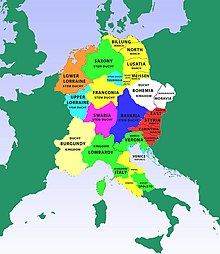
The
Successive kings of Germany founded a series of border counties or
Middle Ages
Frankish Empire
The Western Roman Empire fell in 476 with the
By 500, Clovis had united all the Frankish tribes, ruled all of Gaul
During the 5th and 6th centuries the Merovingian kings conquered the Thuringii (531 to 532), the Kingdom of the Burgundians and the principality of Metz and defeated the Danes, the Saxons and the Visigoths.[63] King Chlothar I (558 to 561) ruled the greater part of what is now Germany and undertook military expeditions into Saxony, while the South-east of what is modern Germany remained under the influence of the Ostrogoths. Saxons controlled the area from the northern sea board to the Harz Mountains and the Eichsfeld in the south.[64]
Blue = realm of Pepin the Short in 758;
Orange = expansion under Charlemagne until 814;
Yellow = Marches and dependencies;
Red = Papal States
The Merovingians placed the various regions of their Frankish Empire under the control of semi-autonomous dukes – either Franks or local rulers,[65] and followed imperial Roman strategic traditions of social and political integration of the newly conquered territories.[66][67] While allowed to preserve their own legal systems,[68] the conquered Germanic tribes were pressured to abandon the Arian Christian faith.[69]
In 718
In 751
Foundation of the Holy Roman Empire
After the death of Frankish king
Fighting among Charlemagne's three grandsons over the continuation of the custom of
-
The division of the Carolingian Empire by the Treaty of Verdun in 843
-
Territorial evolution of the Holy Roman Empire from 962 to 1806
-
TheHohenstaufen emperor Frederick II, 13th century
-
The Holy Roman Empire around the year 1700
Otto the Great

In 936,
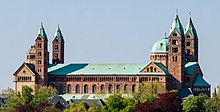

During the reign of Conrad II's son,
Between 1095 and 1291 the various campaigns of the
The term sacrum imperium (Holy Empire) was first used officially by
Hanseatic League
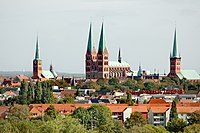
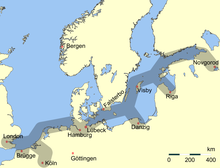
The
Eastward expansion
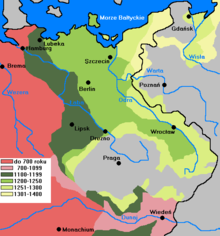
The Ostsiedlung (lit. Eastern settlement) is the term for a process of largely uncoordinated immigration and chartering of settlement structures by ethnic Germans into territories, already inhabited by Slavs and Balts east of the Saale and Elbe rivers, such as modern Poland and Silesia and to the south into Bohemia, modern Hungary and Romania during the High Middle Ages from the 11th to the 14th century.[96][97] The primary purpose of the early imperial military campaigns into the lands to the east during the 10th and 11th century, was to punish and subjugate the local heathen tribes. Conquered territories were mostly lost after the troops had retreated, but eventually were incorporated into the empire as marches, fortified borderlands with garrisoned troops in strongholds and castles, who were to ensure military control and enforce the exaction of tributes. Contemporary sources do not support the idea of policies or plans for the organized settlement of civilians.[98]
In 1230, the Catholic
Church and state
During the reign of the
Having become wealthy through trade, the confident cities of Northern Italy, supported by the Pope, increasingly opposed Barbarossa's claim of feudal rule (Honor Imperii) over Italy. The cities united in the
In 1180, Henry the Lion was outlawed, Saxony was divided, and Bavaria was given to
From 1184 to 1186, the empire under
Between 1212 and 1250,
The failure of negotiations between Emperor
Between 1347 and 1351 Germany and almost the entire European continent were consumed by the most severe outbreak of the
Towns and cities
Total population estimates of the German territories range around 5 to 6 million by the end of Henry III's reign in 1056 and about 7 to 8 million after Friedrich Barbarossa's rule in 1190.
Cologne's central location on the Rhine river placed it at the intersection of the major trade routes between east and west and was the basis of Cologne's growth.[119] The economic structures of medieval and early modern Cologne were characterized by the city's status as a major harbor and transport hub upon the Rhine. It was the seat of an archbishop, under whose patronage the vast Cologne Cathedral was built since 1240. The cathedral houses sacred Christian relics and it has since become a well known pilgrimage destination. By 1288 the city had secured its independence from the archbishop (who relocated to Bonn), and was ruled by its burghers.[120]
Learning and culture
Around 1439,
Around the transition from the 15th to the 16th century,
-
Hildegard von Bingen, Benedictine abbess, philosopher, author, artist and visionary naturalist
-
Minnesänger
-
Albertus Magnus, bishop, philosopher, theologian, Doctor of the Church
-
burghers (bankers, merchants, and politicians) who were his patrons[121]
-
Albrecht Dürer, one of the most influential artists of the Northern Renaissance
-
Tilman Riemenschneider, most accomplished sculptor, woodcarver and master in stone from the late Gothic to the Renaissance
-
Matthias Grünewald was a German Renaissance painter of religious works who ignored Renaissance classicism to continue the style of late medieval Central European art into the 16th century.
-
Adam Ries is known as the "father of modern calculating" because of his decisive contribution to the recognition that Roman numerals are unpractical and to their replacement by the considerably more practical Arabic numerals.[122]
-
Georgius Agricola was the first to drop the Arabic definite article al-, exclusively writing chymia and chymista describing chemistry.[123][124] He is generally referred to as the father of mineralogy and the founder of geology as a scientific discipline.[125][124]
-
Hans Holbein the Younger is considered one of the greatest portraitists of the 16th century.[126]
Early modern Germany
- See List of states in the Holy Roman Empire for subdivisions and the political structure
Social changes
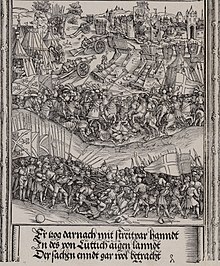
The early-modern European society gradually developed after the disasters of the 14th century as religious obedience and political loyalties declined in the wake of the
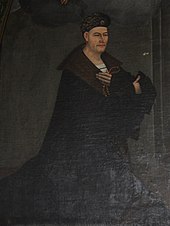
The commercial enterprises of the mercantile elites in the quickly developing cities in South Germany (such as
From 1438 the
Some Europe-wide revolutions were born in the Empire: the combination of the first modern postal system established by Maximilian (with the management under the Taxis family) with the printing system invented by Gutenberg produced a communication revolution[137][138][139] – the Empire's decentralized nature made censorship difficult and this combined with the new communication system to facilitate free expression, thus elevating cultural life. The system also helped the authorities to disseminate orders and policies, boosted the Empire's coherence in general, and helped reformers like Luther to broadcast their views and communicate with each other effectively, thus contributing to the religious Reformation.[140][141][142]
Maximilian's military reforms, especially his development of the Landsknechte, caused a military revolution that broke the back of the knight class[143][144] and spread all over Europe shortly after his death.[145][146]
Imperial reform
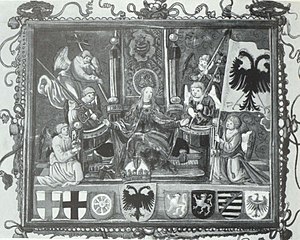
During his reign from 1493 to 1519, Maximilian I, in a combined effort with the Estates (who sometimes acted as opponents and sometimes as cooperators to him), his officials and his humanists, reformed the empire. A dual system of Supreme Courts (the Reichskammergericht and the Reichshofrat) was established (with the Reichshofrat playing a more efficient role during the Early Modern period),[151] together with the formalized Reception of Roman Law;[152][153][154][155] the Imperial Diet (Reichstag) became the all-important political forum and the supreme legal and constitutional institution, which would act as a guarantee for the preservation of the Empire in the long run;[156][157] a Permanent Land Piece (Ewiger Landfriede) was declared in 1495 with regional leagues and unions providing the supporting structure, together with the creation of the Reichskreise (Imperial Circles, which would serve the purpose of organize imperial armies, collect taxes and enforce orders of the imperial institutions);[158][159][160] the Imperial and Court Chanceries were combined to become the decisive government institution;[161][162] the Landsknechte that Maximilian created became a form of imperial army;[163] a national political culture began to emerge;[164][165] and the German language began to attain an unified form.[166][167] The political structure remained incomplete and piecemeal though, mainly due to the failure of the Common Penny (an imperial tax) that the Estates resisted.[151][a] Through many compromises between emperor and estates though, a flexible, future-oriented problem-solving mechanism for the Empire was formed, together with a monarchy through which the emperor shared power with the Estates.[169][b] Whether the Reform also equated to a (successful or unsuccessful) nation building process remains a debate.[171]
The addition Nationis Germanicæ (of German Nation) to the emperor's title appeared first in the 15th century: in a 1486 law decreed by Frederick III and in 1512 in reference to the Imperial Diet in Cologne by Maximilian I. In 1525, the Heilbronn reform plan – the most advanced document of the German Peasants' War (Deutscher Bauernkrieg) – referred to the Reich as von Teutscher Nation (of German nation). During the fifteen century, the term "German nation" had witness a rise in use due to the growth of a "community of interests". The Estates also increasingly distinguished between their German Reich and the wider, "universal" Reich.[172]
Protestant Reformation

In order to manage their ever growing expenses, the Renaissance Popes of the 15th and early 16th century promoted the excessive sale of indulgences and offices and titles of the Roman Curia.
In 1517, the monk

The

The German Peasants' War, which began in the southwest in Alsace and Swabia and spread further east into Franconia, Thuringia and Austria, was a series of economic and religious revolts of the rural lower classes, encouraged by the rhetoric of various radical religious reformers and Anabaptists against the ruling feudal lords. Although occasionally assisted by war-experienced noblemen like Götz von Berlichingen and Florian Geyer (in Franconia) and the theologian Thomas Müntzer (in Thuringia), the peasant forces lacked military structure, skill, logistics and equipment and as many as 100,000 insurgents were eventually defeated and massacred by the territorial princes.[175]
The Catholic
Thirty Years' War, 1618–1648

The 1618 to 1648 Thirty Years' War, that took place almost exclusively in the Holy Roman Empire has its origins, which remain widely debated, in the unsolved and recurring conflicts of the Catholic and Protestant factions. The Catholic emperor Ferdinand II attempted to achieve the religious and political unity of the empire, while the opposing Protestant Union forces were determined to defend their religious rights. The religious motive served as the universal justification for the various territorial and foreign princes, who over the course of several stages joined either of the two warring parties in order to gain land and power.[177][178]
The conflict was sparked by the
The war ranks among the most catastrophic in history as three decades of constant warfare and destruction had left the land devastated. Marauding armies incessantly pillaged the countryside, seized and levied heavy taxes on cities and indiscriminately plundered the food stocks of the peasantry. There were also the countless bands of murderous outlaws, sick, homeless, disrupted people and invalid soldiery. Overall social and economic disruption caused a dramatic decline in population as a result of pandemic murder and random rape and killings, endemic infectious diseases, crop failures, famine, declining birth rates, wanton burglary, witch-hunts and the emigration of terrified people. Estimates vary between a 38% drop from 16 million people in 1618 to 10 million by 1650 and a mere 20% drop from 20 million to 16 million. The
The war was the last major religious struggle in mainland Europe and ended in 1648 with the Peace of Westphalia. It resulted in increased autonomy for the constituent states of the Holy Roman Empire, limiting the power of the emperor. Most of Alsace was ceded to France, Western Pomerania and Bremen-Verden were given to Sweden as Imperial fiefs, and the Netherlands officially left the Empire.[181]
Culture and literacy
The population of Germany reached about twenty million people by the mid-16th century, the great majority of whom were peasant farmers.[183]
The
Luther's translation of the Bible into High German was also decisive for the German language and its evolution from Early New High German to Modern Standard German.[182] The publication of Luther's Bible was a decisive moment in the spread of literacy in early modern Germany,[182] and promoted the development of non-local forms of language and exposed all speakers to forms of German from outside their own area.[191]
Science
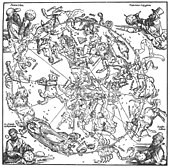
Notable late fifteenth to early eighteenth-century polymaths include: Johannes Trithemius, one of the founder of modern cryptography, founder of steganography, as well as bibliography and literary studies as branches of knowledge;[192][193][194] Conrad Celtes, the first and foremost German cartographic writer and "the greatest lyric genius and certainly the greatest organizer and popularizer of German Humanism";[195][196][197][198] Athanasius Kircher, described by Fletcher as "a founder figure of various disciplines—of geology (certainly vulcanology), musicology (as a surveyor of musical forms), museum curatorship, Coptology, to name a few—and might be claimed today as the first theorist of gravity and a long-term originator of the moving pictures (with his magic lantern shows). Through his many enthusiasms, moreover, he was the conduit of others' pursuits in the rapidly widening horizon of knowledge that marks the later Renaissance.";[199] and Gottfried Wilhelm Leibniz, one of the greatest, if not the greatest "Universal genius", of all times.[200][201]
Cartography developed strongly, with the center being Nuremberg, at the beginning of the sixteenth century. Martin Waldseemüller and Matthias Ringmann's Universalis Cosmographia and the 1513 edition of Geography marked the climax of a cartography revolution.[202][203] The emperor himself dabbled in cartography.[204]
In 1515, Johannes Stabius (court astronomer under Maximilian I), Albrecht Dürer and the astronomer Konrad Heinfogel produced the first planispheres of both southern and northerns hemispheres, also the first printed celestial maps. These maps prompted the revival of interest in the field of uranometry throughout Europe.[205][206][207][208]
Astronomer Johannes Kepler from Weil der Stadt was one of the pioneering minds of empirical and rational research. Through rigorous application of the principles of the Scientific method he construed his laws of planetary motion. His ideas influenced contemporary Italian scientist Galileo Galilei and provided fundamental mechanical principles for Isaac Newton's theory of universal gravitation.[209]
-
Otto von Guericke, scientist, inventor and politician, famous for demonstrating the power of atmospheric pressure with the Magdeburg hemispheres
-
Elisabeth of the Palatinate, philosopher, critic of René Descartes' dualistic metaphysics
-
Hans Jakob Christoffel von Grimmelshausen, author of the novel Simplicius Simplicissimus
-
Athanasius Kircher, polymath
-
Gottfried Wilhelm Leibniz, philosopher and mathematician
-
Ehrenfried Walther von Tschirnhaus, mathematician, physicist, physician, philosopher, co-inventor of European porcelain
Colonies
German Colonies in the Americas existed because the
1648–1815
Rise of Prussia

Frederick William, ruler of Brandenburg-Prussia since 1640 and later called the Great Elector, acquired East Pomerania via the Peace of Westphalia in 1648. He reorganized his loose and scattered territories and managed to throw off the vassalage of Prussia under the Kingdom of Poland during the Second Northern War.[213] In order to address the demographic problem of Prussia's largely rural population of about three million, he attracted the immigration and settlement of French Huguenots in urban areas. Many became craftsmen and entrepreneurs.[214] King Frederick William I, known as the Soldier King, who reigned from 1713 to 1740, established the structures for the highly centralized Prussian state and raised a professional army, that was to play a central role.[215] He also successfully operated a command economy that some historians consider mercantilist.[216][217]
The total population of Germany (in its 1914 territorial extent) grew from 16 million in 1700 to 17 million in 1750 and reached 24 million in 1800. The 18th-century economy noticeably profited from widespread practical application of the Scientific method as greater yields and a more reliable agricultural production and the introduction of hygienic standards positively affected the birth rate – death rate balance.[218]
Wars

After the last-minute
Enlightened absolutism
Frederick II "the Great" is best known for his military genius and unique utilisation of the highly organized army to make Prussia one of the great powers in Europe as well as escaping from almost certain national disaster at the last minute. He was also an artist, author and philosopher, who conceived and promoted the concept of enlightened absolutism.[224][225]
Austrian empress
The concept of enlightened absolutism, although rejected by the nobility and citizenry, was advocated in
During 1772 to 1795 Prussia instigated the partitions of Poland by occupying the western territories of the former Polish–Lithuanian Commonwealth. Austria and Russia resolved to acquire the remaining lands with the effect that Poland ceased to exist as a sovereign state until 1918.[228]
Smaller states
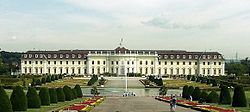
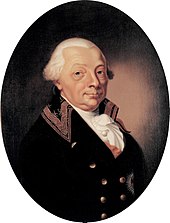
The smaller German states were overshadowed by Prussia and Austria. Bavaria had a rural economy. Saxony was in economically good shape, although numerous wars had taken their toll. During the time when Prussia rose rapidly within Germany, Saxony was distracted by foreign affairs. The House of Wettin concentrated on acquiring and then holding on to the Polish throne which was ultimately unsuccessful.[229][clarification needed]
Many of the smaller states of Germany were run by bishops, who in reality were from powerful noble families and showed scant interest in religion. While none of the later ecclesial rulers reached the outstanding reputation of Mainz' Johann Philipp von Schönborn or Münster's Christoph Bernhard von Galen, some of them promoted Enlightenment like the benevolent and progressive Franz Ludwig von Erthal in Würzburg and Bamberg.[230]
In Hesse-Kassel, the Landgrave Frederick II, ruled from 1760 to 1785 as an enlightened despot, and raised money by renting soldiers (called "Hessians") to Great Britain to help fight the American Revolutionary War. He combined Enlightenment ideas with Christian values, cameralist plans for central control of the economy, and a militaristic approach toward diplomacy.[231]
Hanover did not have to support a lavish court—its rulers were also kings of England and resided in London. George III, elector (ruler) from 1760 to 1820, never once visited Hanover. The local nobility who ran the country opened the University of Göttingen in 1737; it soon became a world-class intellectual center. Baden sported perhaps the best government of the smaller states. Karl Friedrich ruled for 73 years and was an enthusiast for the Enlightenment; he abolished serfdom in 1783.[232]
The smaller states failed to form coalitions with each other, and were eventually overwhelmed by Prussia who swallowed up many of them between 1807 and 1871.[233]
Social changes
Enlightenment
Since the mid-18th century recognition and application of Enlightenment ideas, higher cultural, intellectual and spiritual standards have led to higher quality works of art in music, philosophy, science and literature. Philosopher Christian Wolff was a pioneering author on a near universal number of Enlightenment rationality topics in Germany and established German as the language of philosophic reasoning, scholarly instruction and research.[240]
In 1685, Margrave
German music, sponsored by the upper classes, came of age under composers Johann Sebastian Bach, Joseph Haydn, and Wolfgang Amadeus Mozart.[245]
Königsberg philosopher Immanuel Kant tried to reconcile rationalism and religious belief, individual freedom, and political authority. Kant's work contained basic tensions that would continue to shape German thought – and indeed all of European philosophy – well into the 20th century.[246][247] The ideas of the Enlightenment and their implementation received general approval and recognition as principal cause for widespread cultural progress.[248]
French Revolution, 1789–1815
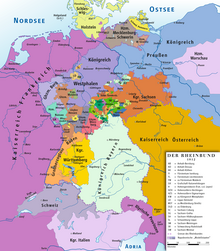
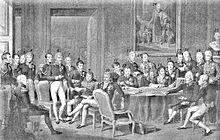
German reaction to the French Revolution was mixed at first. German intellectuals celebrated the outbreak, hoping to see the triumph of Reason and The Enlightenment. The royal courts in Vienna and Berlin denounced the overthrow of the king and the threatened spread of notions of liberty, equality, and fraternity. By 1793, the execution of the French king and the onset of the Terror disillusioned the Bildungsbürgertum (educated middle classes). Reformers said the solution was to have faith in the ability of Germans to reform their laws and institutions in peaceful fashion.[249]
Europe was racked by two decades of war revolving around France's efforts to spread its revolutionary ideals, and the opposition of reactionary royalty. War broke out in 1792 as Austria and Prussia invaded France, but were defeated at the Battle of Valmy (1792). The German lands saw armies marching back and forth, bringing devastation (albeit on a far lower scale than the Thirty Years' War, almost two centuries before), but also bringing new ideas of liberty and civil rights for the people. Prussia and Austria ended their failed wars with France but (with Russia) partitioned Poland among themselves in 1793 and 1795.
French consulate suzerainty
Imperial French suzerainty
Under
After Napoleon's military fiasco in Russia in 1812, Prussia allied with Russia in the Sixth Coalition. A series of battles followed and Austria joined the alliance. Napoleon was decisively defeated in the Battle of Leipzig in late 1813. The German states of the Confederation of the Rhine defected to the Coalition against Napoleon, who rejected any peace terms. Coalition forces invaded France in early 1814, Paris fell and in April Napoleon surrendered. Prussia as one of the winners at the Congress of Vienna, gained extensive territory.[218]
1815–1871
Overview
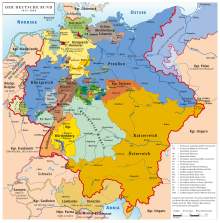

In 1815, continental Europe was in a state of overall turbulence and exhaustion, as a consequence of the
German Confederation
During the 1815 Congress of Vienna the 39 former states of the Confederation of the Rhine joined the German Confederation, a loose agreement for mutual defense. Attempts of economic integration and customs coordination were frustrated by repressive anti-national policies. Great Britain approved of the union, convinced that a stable, peaceful entity in central Europe could discourage aggressive moves by France or Russia. Most historians, however, concluded, that the Confederation was weak and ineffective and an obstacle to German nationalism. The union was undermined by the creation of the Zollverein in 1834, the 1848 revolutions, the rivalry between Prussia and Austria and was finally dissolved in the wake of the Austro-Prussian War of 1866,[255] to be replaced by the North German Confederation during the same year.[255]
Society and economy
Increasingly after 1815, a centralized Prussian government based in Berlin took over the powers of the nobles, which in terms of control over the peasantry had been almost absolute. To help the nobility avoid indebtedness, Berlin set up a credit institution to provide capital loans in 1809, and extended the loan network to peasants in 1849. When the German Empire was established in 1871, the Junker nobility controlled the army and the navy, the bureaucracy, and the royal court; they generally set governmental policies.[256]
Population

Between 1815 and 1865 the population of the German Confederation (excluding Austria) grew around 60% from 21 million to 34 million.
Industrialization


In 1800, Germany's social structure was poorly suited to entrepreneurship or economic development. Domination by France during the French Revolution (1790s to 1815), however, produced important institutional reforms, that included the abolition of feudal restrictions on the sale of large landed estates, the reduction of the power of the guilds in the cities, and the introduction of a new, more efficient commercial law. The idea, that these reforms were beneficial for Industrialization has been contested.[259]
In the early 19th century the Industrial Revolution was in full swing in Britain, France, and Belgium. The various small federal states in Germany developed only slowly and independently as competition was strong. Early investments for the railway network during the 1830s came almost exclusively from private hands. Without a central regulatory agency the construction projects were quickly realized. Actual industrialization only took off after 1850 in the wake of the railroad construction.[260] The textile industry grew rapidly, profiting from the elimination of tariff barriers by the Zollverein.[261][262] During the second half of the 19th century the German industry grew exponentially and by 1900, Germany was an industrial world leader along with Britain and the United States.[263]</ref>
Urbanization
In 1800, the population was predominantly rural, as only 10% lived in communities of 5,000 or more people, and only 2% lived in cities of more than 100,000 people. After 1815, the urban population grew rapidly, due to the influx of young people from the rural areas. Berlin grew from 172,000 in 1800, to 826,000 inhabitants in 1870, Hamburg from 130,000 to 290,000, Munich from 40,000 to 269,000 and Dresden from 60,000 to 177,000.[264]
Railways
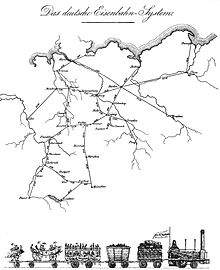
The takeoff stage of economic development came with the railroad revolution in the 1840s, which opened up new markets for local products, created a pool of middle managers, increased the demand for engineers, architects and skilled machinists and stimulated investments in coal and iron. Political disunity of three dozen states and a pervasive conservatism made it difficult to build railways in the 1830s. However, by the 1840s, trunk lines did link the major cities; each German state was responsible for the lines within its own borders. Economist Friedrich List summed up the advantages to be derived from the development of the railway system in 1841:
- 1. As a means of national defence, it facilitates the concentration, distribution and direction of the army.
- 2. It is a means to the improvement of the culture of the nation. It brings talent, knowledge and skill of every kind readily to market.
- 3. It secures the community against dearth and famine, and against excessive fluctuation in the prices of the necessaries of life.
- 4. It promotes the spirit of the nation, as it has a tendency to destroy the Philistine spirit arising from isolation and provincial prejudice and vanity. It binds nations by ligaments, and promotes an interchange of food and of commodities, thus making it feel to be a unit. The iron rails become a nerve system, which, on the one hand, strengthens public opinion, and, on the other hand, strengthens the power of the state for police and governmental purposes.[265]
Lacking a technological base at first, engineering and hardware was imported from Britain. In many cities, the new railway shops were the centres of technological awareness and training, so that by 1850, Germany was self-sufficient in meeting the demands of railroad construction, and the railways were a major impetus for the growth of the new steel industry. Observers found that even as late as 1890, their engineering was inferior to Britain. However, German unification in 1870 stimulated consolidation, nationalisation into state-owned companies, and further rapid growth. Unlike the situation in France, the goal was the support of industrialisation. Eventually numerous lines criss-crossed the Ruhr area and other industrial centers and provided good connections to the major ports of Hamburg and Bremen. By 1880, 9,400 locomotives pulled 43,000 passengers and 30,000 tons of freight a day.[260]
Newspapers and magazines
While there existed no national newspaper the many states issued a great variety of printed media, although they rarely exceeded regional significance. In a typical town existed one or two outlets, urban centers, such as Berlin and Leipzig had dozens. The audience was limited to a few per cent of male adults, chiefly from the aristocratic and upper middle class. Liberal publishers outnumbered conservative ones by a wide margin. Foreign governments bribed editors to guarantee a favorable image.[266] Censorship was strict, and the imperial government issued the political news that was supposed to be published. After 1871, strict press laws were enforced by Bismarck to contain the Socialists and hostile editors. Editors focused on political commentary, culture, the arts, high culture and the popular serialized novels. Magazines were politically more influential and attracted intellectual authors.[267]
Science and culture during the 18th and 19th century
19th-century artists and intellectuals were greatly inspired by the ideas of the French Revolution and the great poets and writers
University professors developed international reputations, especially in the humanities led by history and philology, which brought a new historical perspective to the study of political history, theology, philosophy, language, and literature. With Georg Wilhelm Friedrich Hegel, Friedrich Wilhelm Joseph Schelling, Arthur Schopenhauer, Friedrich Nietzsche, Max Weber, Karl Marx and Friedrich Engels in philosophy, Friedrich Schleiermacher in theology and Leopold von Ranke in history became famous. The University of Berlin, founded in 1810, became the world's leading university. Von Ranke, for example, professionalized history and set the world standard for historiography. By the 1830s mathematics, physics, chemistry, and biology had emerged with world class science, led by Alexander von Humboldt in natural science and Carl Friedrich Gauss in mathematics. Young intellectuals often turned to politics, but their support for the failed revolution of 1848 forced many into exile.[218]
-
Friedrich Hegel
-
Joseph von Fraunhofer, physicist and optical lens manufacturer
Religion
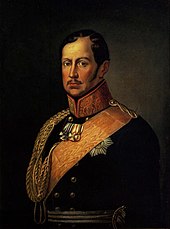
Two main developments reshaped religion in Germany. Across the land, there was a movement to unite the larger Lutheran and the smaller Reformed Protestant churches. The churches themselves brought this about in Baden, Nassau, and Bavaria. However, in Prussia King
From the religious point of view of the typical Catholic or Protestant, major changes were underway in terms of a much more personalized religiosity that focused on the individual more than the church or the ceremony. The rationalism of the late 19th century faded away, and there was a new emphasis on the psychology and feeling of the individual, especially in terms of contemplating sinfulness, redemption, and the mysteries and the revelations of Christianity. Pietistic revivals were common among Protestants. Among, Catholics there was a sharp increase in popular pilgrimages. In 1844 alone, half a million pilgrims made a pilgrimage to the city of Trier in the Rhineland to view the Seamless robe of Jesus, said to be the robe that Jesus wore on the way to his crucifixion. Catholic bishops in Germany had historically been largely independent of Rome, but now the Vatican exerted increasing control, a new "ultramontanism" of Catholics highly loyal to Rome.[272] A sharp controversy broke out in 1837–1838 in the largely Catholic Rhineland over the religious education of children of mixed marriages, where the mother was Catholic and the father Protestant. The government passed laws to require that these children always be raised as Protestants, contrary to Napoleonic law that had previously prevailed and allowed the parents to make the decision. It put the Catholic Archbishop under house arrest. In 1840, the new King Frederick William IV sought reconciliation and ended the controversy by agreeing to most of the Catholic demands. However Catholic memories remained deep and led to a sense that Catholics always needed to stick together in the face of an untrustworthy government.[273]
Politics of restoration and revolution
After Napoleon

After the fall of Napoleon, Europe's statesmen convened in Vienna in 1815 for the reorganisation of European affairs, under the leadership of the
The
In 1819, a student radical assassinated the reactionary playwright
In 1834, the Zollverein was established, a customs union between Prussia and most other German states, but excluding Austria. As industrialisation developed, the need for a unified German state with a uniform currency, legal system, and government became more and more obvious.
1848
Growing discontent with the political and social order imposed by the Congress of Vienna led to the outbreak, in 1848, of the
But the 1848 revolution turned out to be unsuccessful: King Frederick William IV of Prussia refused the imperial crown, the Frankfurt parliament was dissolved, the ruling princes repressed the risings by military force, and the German Confederation was re-established by 1850. Many leaders went into exile, including a number who went to the United States and became a political force there.[276]
1850s
The 1850s were a period of extreme political reaction. Dissent was vigorously suppressed, and many Germans emigrated to America following the collapse of the 1848 uprisings. Frederick William IV became extremely depressed and melancholic during this period, and was surrounded by men who advocated clericalism and absolute divine monarchy. The Prussian people once again lost interest in politics. Prussia not only expanded its territory but began to industrialize rapidly, while maintaining a strong agricultural base.
Bismarck takes charge (1862–1866)
In 1857, the Prussian king
In 1863–1864, disputes between Prussia and Denmark over
North German Confederation, 1866–1871
After the
German Empire, 1871–1918
Overview
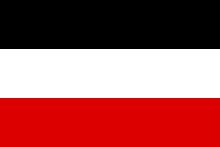

Chancellor Otto von Bismarck determined the political course of the German Empire until 1890. He fostered alliances in Europe to contain France on the one hand and aspired to consolidate Germany's influence in Europe on the other. His principal domestic policies focused on the suppression of socialism and the reduction of the strong influence of the Roman Catholic Church on its adherents. He issued a series of anti-socialist laws in accord with a set of social laws, that included universal health care, pension plans and other social security programs. His Kulturkampf policies were vehemently resisted by Catholics, who organized political opposition in the Center Party (Zentrum). German industrial and economic power had grown to match Britain by 1900.
In 1888, the young and ambitious Kaiser
Bismarck era
Bismarck was the dominant personality not just in Germany but in all of Europe and indeed the entire diplomatic world 1870–1890. Historians continue to debate his goals. Lothar Gall and Ernst Engelberg consider Bismarck was a future-oriented modernizer. In sharp contrast, Jonathan Steinberg decided he was basically a traditional Prussian whose highest priorities were to reinforce the monarchy, the Army, and the social and economic dominance of his own Junker class, thereby being responsible for a tragic history after his removal in 1890.[282]
The new empire
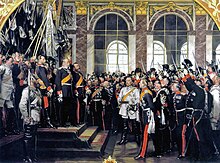
In 1868, the Spanish queen
During the
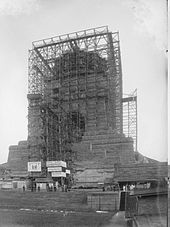
A federal empire
The new empire was a
The Prusso-German authorities were aware of necessary integration concepts as the results and the 52% voter turnout of the first imperial elections had clearly demonstrated. Historians increasingly argue, that the nation-state was forged through empire.[288] National identity was expressed in bombastic imperial stone iconography and was to be achieved as an imperial people, with an emperor as head of state and it was to develop imperial ambitions – domestic, European and global.[289][288]
Bismarck's domestic policies as Chancellor of Germany were based on his effort to universally adopt the idea of the Protestant Prussian state and achieve the clear separation of church and state in all imperial principalities. In the
A three-class system: Aristocracy, middle class, and working class
The new Empire provided attractive top level career opportunities for the national nobility in the various branches of the consular and civil services and the army. As a consequence the aristocratic near total control of the civil sector guaranteed a dominant voice in the decision making in the universities and the churches. The 1914 German diplomatic corps consisted of 8 princes, 29 counts, 20 barons, 54 representants of the lower nobility and a mere 11 commoners. These commoners were indiscriminately recruited from elite industrialist and banking families. The consular corps employed numerous commoners, that however, occupied positions of little to no executive power.[292] The Prussian tradition to reserve the highest military ranks for young aristocrats was adopted and the new constitution put all military affairs under the direct control of the Emperor and beyond control of the Reichstag.[293] With its large corps of reserve officers across Germany, the military strengthened its role as "The estate which upheld the nation", and historian Hans-Ulrich Wehler added: "it became an almost separate, self-perpetuating caste".[294]
Power increasingly was centralized among the 7000 aristocrats, who resided in the national capital of Berlin and neighboring Potsdam. Berlin's rapidly increasing rich middle-class copied the aristocracy and tried to marry into it. A peerage could permanently boost a rich industrial family into the upper reaches of the establishment.[295] However, the process tended to work in the other direction as the nobility became industrialists. For example, 221 of the 243 mines in Silesia were owned by nobles or by the King of Prussia himself.[296]
The middle class in the cities grew exponentially, although it never acquired the powerful parliamentary representation and legislative rights as in France, Britain or the United States. The Association of German Women's Organizations or BDF was established in 1894 to encompass the proliferating women's organizations that had emerged since the 1860s. From the beginning the BDF was a bourgeois organization, its members working toward equality with men in such areas as education, financial opportunities, and political life. Working-class women were not welcome and were organized by the Socialists.[297]
The rise of the Socialist Workers' Party (later known as the Social Democratic Party of Germany, SPD), aimed to peacefully establish a socialist order through the transformation of the existing political and social conditions. From 1878, Bismarck tried to oppose the growing social democratic movement by outlawing the party's organisation, its assemblies and most of its newspapers. Nonetheless, the Social Democrats grew stronger and Bismarck initiated his social welfare program in 1883 in order to appease the working class.[298]
Bismarck built on a tradition of welfare programs in Prussia and Saxony that began as early as the 1840s. In the 1880s he introduced old age pensions, accident insurance, medical care, and unemployment insurance that formed the basis of the modern
Kulturkampf

Bismarck would not tolerate any power outside Germany—as in Rome—having a say in domestic affairs. He launched the Kulturkampf ("culture war") against the power of the pope and the Catholic Church in 1873, but only in the state of Prussia. This gained strong support from German liberals, who saw the Catholic Church as the bastion of reaction and their greatest enemy. The Catholic element, in turn, saw in the National-Liberals the worst enemy and formed the Center Party.[303]
Catholics, although nearly a third of the national population, were seldom allowed to hold major positions in the Imperial government, or the Prussian government. After 1871, there was a systematic purge of the remaining Catholics; in the powerful interior ministry, which handled all police affairs, the only Catholic was a messenger boy. Jews were likewise heavily discriminated against.[304][305]
Most of the Kulturkampf was fought out in Prussia, but Imperial Germany passed the Pulpit Law which made it a crime for any cleric to discuss public issues in a way that displeased the government. Nearly all Catholic bishops, clergy, and laymen rejected the legality of the new laws and defiantly faced the increasingly heavy penalties and imprisonments imposed by Bismarck's government. Historian Anthony Steinhoff reports the casualty totals:
As of 1878, only three of eight Prussian dioceses still had bishops, some 1,125 of 4,600 parishes were vacant, and nearly 1,800 priests ended up in jail or in exile ... Finally, between 1872 and 1878, numerous Catholic newspapers were confiscated, Catholic associations and assemblies were dissolved, and Catholic civil servants were dismissed merely on the pretence of having Ultramontane sympathies.[306]
Bismarck underestimated the resolve of the Catholic Church and did not foresee the extremes that this struggle would attain.[307][308] The Catholic Church denounced the harsh new laws as anti-Catholic and mustered the support of its rank and file voters across Germany. In the following elections, the Center Party won a quarter of the seats in the Imperial Diet.[309] The conflict ended after 1879 because Pope Pius IX died in 1878 and Bismarck broke with the Liberals to put his main emphasis on tariffs, foreign policy, and attacking socialists. Bismarck negotiated with the conciliatory new pope Leo XIII.[310] Peace was restored, the bishops returned and the jailed clerics were released. Laws were toned down or taken back, but the laws concerning education, civil registry of marriages and religious disaffiliation remained in place. The Center Party gained strength and became an ally of Bismarck, especially when he attacked socialism.[311]
Historians have cited the campaign against the Catholic church, as well as a similar campaign against the Social Democratic Party, as leaving a lasting influence on the German consciousness, whereby national unity can be encouraged by excluding or persecuting a minority. This strategy, later referred to as "negative integration", set a tone of either being loyal to the government or an enemy of the state, which directly influenced German nationalist sentiment and the later Nazi movement.[312]
Foreign policies and relations
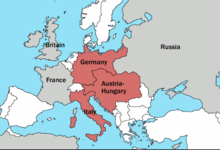
Chancellor Bismarck's imperial foreign policy basically aimed at security and the prevention of a Franco-Russian alliance, in order to avoid a likely
In 1879, Germany formed the Dual Alliance with Austria-Hungary, an agreement of mutual military assistance in the case of an attack from Russia, which was not satisfied with the agreement of the Congress of Berlin. The establishment of the Dual Alliance led Russia to take a more conciliatory stance and in 1887, the so-called Reinsurance Treaty was signed between Germany and Russia. In it, the two powers agreed on mutual military support in the case that France attacked Germany or an Austrian attack on Russia. Russia turned its attention eastward to Asia and remained largely inactive in European politics for the next 25 years. In 1882, Italy, seeking supporters for its interests in North Africa against France's colonial policy, joined the Dual Alliance, which became the Triple Alliance. In return for German and Austrian support, Italy committed itself to assisting Germany in the case of a French attack.[313]
Bismarck had always argued that the acquisition of overseas colonies was impractical and the burden of administration and maintenance would outweigh the benefits. Eventually, Bismarck gave way, and a number of colonies were established in Africa (
Wilhelminian Era (1888–1918)
Wilhelm II

Emperor William I died in 1888. His son
Alliances and diplomacy
The young
First a long-term coalition between France and Russia had to fall apart, secondly, Russia and Britain would never get together, and finally, Britain would eventually seek an alliance with Germany.
Subsequently, Wilhelm refused to renew the Reinsurance Treaty with Russia. Russia promptly formed a closer relationship with France in the Dual Alliance of 1894, as both countries were concerned about the novel disagreeability of Germany. Furthermore, Anglo–German relations provided, from a British point of view, no basis for any consensus as the Kaiser refused to divert from his, although somewhat peculiarly desperate and anachronistic, aggressive imperial engagement and the naval arms race in particular. Holstein's analysis proved to be mistaken on every point and Wilhelm failed too, as he did not adopt a nuanced political dialogue. Germany was left gradually isolated and dependent on the Triple Alliance, with Austria-Hungary and Italy. This agreement was hampered by differences between Austria and Italy and in 1915 Italy left the alliance.[251]
In 1897, Admiral Alfred von Tirpitz, state secretary of the German Imperial Naval Office devised his initially rather practical, yet nonetheless ambitious plan to build a sizeable naval force. Although basically posing only an indirect threat as a Fleet in being, Tirpitz theorized, that its mere existence would force Great Britain, dependent on unrestricted movement on the seas, to agree to diplomatic compromises.[321] Tirpitz started the program of warship construction in 1898 and enjoyed the full support of Kaiser Wilhelm. Wilhelm entertained less rational ideas on the fleet, that circled around his romantic childhood dream to have a "fleet of [his] own some day" and his obsessive adherence to direct his policies along the line of Alfred Thayer Mahan's work The Influence of Sea Power upon History.[322] In exchange for the eastern African island of Zanzibar, Germany had bargained the island of Heligoland in the German Bight with Britain in 1890, and converted the island into a naval base and installed immense coastal defense batteries. Britain considered the imperial German endeavours to be a dangerous infringement on the century-old delicate balance of global affairs and trade on the seas under British control. The British, however, resolved to keep up the naval arms race and introduced the highly advanced new Dreadnought battleship concept in 1907. Germany quickly adopted the concept and by 1910 the arms race again escalated.[323][324]
In the First Moroccan Crisis of 1905, Germany nearly clashed with Britain and France when the latter attempted to establish a protectorate over Morocco. Kaiser Wilhelm II was upset at having not been informed about French intentions, and declared their support for Moroccan independence. William II made a highly provocative speech regarding this. The following year, a conference was held in which all of the European powers except Austria-Hungary (by now little more than a German satellite) sided with France. A compromise was brokered by the United States where the French relinquished some, but not all, control over Morocco.[325]
The Second Moroccan Crisis of 1911 saw another dispute over Morocco erupt when France tried to suppress a revolt there. Germany, still smarting from the previous quarrel, agreed to a settlement whereby the French ceded some territory in central Africa in exchange for Germany's renouncing any right to intervene in Moroccan affairs. This confirmed French control over Morocco, which became a full protectorate of that country in 1912.[326]
Economy

By 1890, the economy continued to industrialize and grow on an even higher rate than during the previous two decades and increased dramatically in the years leading up to World War I. Growth rates for the individual branches and sectors often varied considerably, and periodical figures provided by the Kaiserliches Statistisches Amt ("Imperial Statistical Bureau) are often disputed or just assessments. Classification and naming of internationally traded commodities and exported goods was still in progress and the structure of production and export had changed during four decades. Published documents provide numbers such as: The proportion of goods manufactured by the modern industry was approximately 25% in 1900, while the proportion of consumer related products in manufactured exports stood at 40%.[327] Reasonably exact are the figures for the entire industrial production between 1870 and 1914, which increased about 500%.[328]
Historian J. A. Perkins argued that more important than Bismarck's new tariff on imported grain was the introduction of the sugar beet as a main crop. Farmers quickly abandoned traditional, inefficient practices in favor of modern methods, including the use of artificial fertilizers and mechanical tools. Intensive methodical farming of sugar and other root crops made Germany the most efficient agricultural producer in Europe by 1914. Even so, farms were usually small in size and women did much of the field work. An unintended consequence was the increased dependence on migratory, especially foreign, labor.[329][330]

The basics of the modern chemical research laboratory layout and the introduction of essential equipment and instruments such as Bunsen burners, the Petri dish, the Erlenmeyer flask, task-oriented working principles and team research originated in 19th-century Germany and France. The organisation of knowledge acquisition was further refined by laboratory integration in research institutes of the universities and the industries. Germany acquired the leading role in the world's Chemical industry by the late 19th century through strictly organized methodology. In 1913, the German Chemical industry produced almost 90 per cent of the global supply of dyestuffs and sold about 80 per cent of its production abroad.[331][332]
Germany became Europe's leading steel-producing nation in the 1890s, thanks in large part to the protection from American and British competition afforded by tariffs and cartels.[333] The leading firm was "Friedrich Krupp AG Hoesch-Krupp", run by the Krupp family.[334] The merger of several major firms into the Vereinigte Stahlwerke (United Steel Works) in 1926 was modeled on the U.S. Steel corporation in the United States. The new company emphasized rationalization of management structures and modernization of the technology; it employed a multi-divisional structure and used return on investment as its measure of success. By 1913, American and German exports dominated the world steel market, as Britain slipped to third place.[335]
In machinery, iron and steel, and other industries, German firms avoided cut-throat competition and instead relied on trade associations. Germany was a world leader because of its prevailing "corporatist mentality", its strong bureaucratic tradition, and the encouragement of the government. These associations regulate competition and allowed small firms to function in the shadow of much larger companies.[336]
Colonies

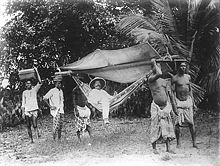
By the 1890s, German colonial expansion in Asia and the Pacific (
The largest colonial enterprises were in Africa.
Other claimed territories of the German Colonial Empire are:
World War I

Causes
Ethnic demands for nation states upset the balance between the empires that dominated Europe, leading to World War I, which started in August 1914. Germany stood behind its ally Austria in a confrontation with Serbia, but Serbia was under the protection of Russia, which was allied to France. Germany was the leader of the Central Powers, which included Austria-Hungary, the Ottoman Empire, and later Bulgaria; arrayed against them were the Allies, consisting chiefly of Russia, France, Britain, and in 1915 Italy.
In explaining why neutral Britain went to war with Germany, author Paul M. Kennedy recognized it was critical for war that Germany become economically more powerful than Britain, but he downplays the disputes over economic trade imperialism, the Baghdad Railway, confrontations in Central and Eastern Europe, high-charged political rhetoric and domestic pressure-groups. Germany's reliance time and again on sheer power, while Britain increasingly appealed to moral sensibilities, played a role, especially in seeing the invasion of Belgium as a necessary military tactic or a profound moral crime. The German invasion of Belgium was not important because the British decision had already been made and the British were more concerned with the fate of France. Kennedy argues that by far the main reason was London's fear that a repeat of 1870 – when Prussia and the German states smashed France – would mean that Germany, with a powerful army and navy, would control the English Channel and northwest France. British policy makers insisted that would be a catastrophe for British security.[350]
Western Front
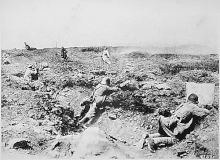
In the west, Germany sought a quick victory by encircling Paris using the Schlieffen Plan. But it failed due to Belgian resistance, Berlin's diversion of troops, and very stiff French resistance on the Marne, north of Paris. The Western Front became an extremely bloody battleground of trench warfare. The stalemate lasted from 1914 until early 1918, with ferocious battles that moved forces a few hundred yards at best along a line that stretched from the North Sea to the Swiss border. The British imposed a tight naval blockade in the North Sea which lasted until 1919, sharply reducing Germany's overseas access to raw materials and foodstuffs. Food scarcity became a serious problem by 1917.[351] The United States joined with the Allies in April 1917. The entry of the United States into the war – following Germany's declaration of unrestricted submarine warfare – marked a decisive turning-point against Germany.[352]
Total casualties on the Western Front were 3,528,610 killed and 7,745,920 wounded.[353]
Eastern Front
More wide open was the fighting on the
1918
By defeating Russia in 1917, Germany was able to bring hundreds of thousands of combat troops from the east to the Western Front, giving it a numerical advantage over the Allies. By retraining the soldiers in new storm-trooper tactics, the Germans expected to unfreeze the Battlefield and win a decisive victory before the American army arrived in strength.[356] However, the spring offensives all failed, as the Allies fell back and regrouped, and the Germans lacked the reserves necessary to consolidate their gains. In the summer, with the Americans arriving at 10,000 a day, and the German reserves exhausted, it was only a matter of time before multiple Allied offenses destroyed the German army.[357]
Homefront
Although war was not expected in 1914, Germany rapidly mobilized its civilian economy for the war effort, the economy was handicapped by the British blockade that cut off food supplies.[358]
Steadily conditions deteriorated rapidly on the home front, with severe food shortages reported in all urban areas. Causes involved the transfer of many farmers and food workers into the military, an overburdened railroad system, shortages of coal, and especially the British blockade that cut off imports from abroad. The winter of 1916–1917 was known as the "turnip winter", because that vegetable, usually fed to livestock, was used by people as a substitute for potatoes and meat, which were increasingly scarce. Thousands of soup kitchens were opened to feed the hungry people, who grumbled that the farmers were keeping the food for themselves. Even the army had to cut the rations for soldiers.
- By 1917, after three years of war, the various groups and bureaucratic hierarchies which had been operating more or less independently of one another in peacetime (and not infrequently had worked at cross purposes) were subordinated to one (and perhaps the most effective) of their number: the General Staff. Military officers controlled civilian government officials, the staffs of banks, cartels, firms, and factories, engineers and scientists, workingmen, farmers-indeed almost every element in German society; and all efforts were directed in theory and in large degree also in practice to forwarding the war effort.[360]
1918 was the year of the deadly
Revolution 1918
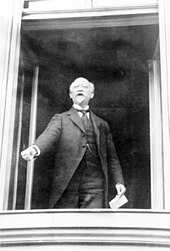
The end of October 1918, in
On 11 November,
Weimar Republic, 1919–1933
Overview

The humiliating peace terms in the
The early years
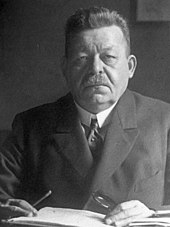
On 11 August 1919, the Weimar constitution came into effect, with Friedrich Ebert as first President.
On 30 December 1918, the Communist Party of Germany was founded by the Spartacus League, who had split from the Social Democratic Party during the war. It was headed by Rosa Luxemburg and Karl Liebknecht, and rejected the parliamentary system. In 1920, about 300,000 members from the Independent Social Democratic Party of Germany joined the party, transforming it into a mass organization. The Communist Party had a following of about 10% of the electorate.[362]
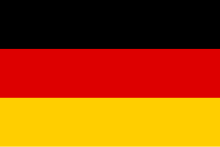
In the first months of 1920, the Reichswehr was to be reduced to 100,000 men, in accordance with the Treaty of Versailles. This included the dissolution of many Freikorps – units made up of volunteers. In an attempt at a coup d'état in March 1920, the Kapp Putsch, extreme right-wing politician Wolfgang Kapp let Freikorps soldiers march on Berlin and proclaimed himself Chancellor of the Reich. After four days the coup d'état collapsed, due to popular opposition and lack of support by the civil servants and the officers. Other cities were shaken by strikes and rebellions, which were bloodily suppressed.
Germany was the first state to establish diplomatic relations with the new

When Germany defaulted on its reparation payments, French and Belgian troops occupied the heavily industrialised Ruhr district (January 1923). The German government encouraged the population of the Ruhr to engage in
In September 1923, the deteriorating economic conditions led Chancellor
The national elections of 1924 led to a swing to the right. Field Marshal Paul von Hindenburg was elected President in 1925.
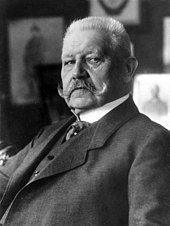
In October 1925, the
Reparations
The actual amount of reparations that Germany was obliged to pay out was not the 132 billion marks decided in the London Schedule of 1921 but rather the 50 billion marks stipulated in the A and B Bonds. Historian Sally Marks says the "C bonds" were entirely chimerical—a device to fool the public into thinking Germany would pay much more. The actual total payout from 1920 to 1931 (when payments were suspended indefinitely) was 20 billion
Economic collapse and political problems, 1929–1933
The Wall Street Crash of 1929 marked the beginning of the worldwide Great Depression, which hit Germany as hard as any nation. In July 1931, the Danat-Bank – one of the biggest German banks – failed. In early 1932, the number of unemployed had soared to more than 6,000,000.
On top of the collapsing economy came a political crisis: the proportional representation that the political system operated on meant that for every 60,000 votes a party received, it earned a seat in the Reichstag. This resulted in a disparate and myriad collection of minor parties that struggled to cooperate.[365] The political parties represented in the Reichstag were unable to build a governing majority in the face of escalating extremism from both the far right (the Nazis, NSDAP) and the far left (Communist Party of Germany).[366] In March 1930, President Hindenburg appointed Heinrich Brüning Chancellor. To push through a package of austerity measures against a majority of Social Democrats, Communists and the NSDAP (Nazis), Brüning and Hindenburg made use of emergency decrees provided for in article 48 of Weimar's constitution. They also used the power to prematurely dissolve Parliament. In March and April 1932, Hindenburg was re-elected in the German presidential election of 1932.[367]
The Nazi Party was the largest party in the national elections of 1932. On 31 July 1932 it received 37.3% of the votes, and in the election on 6 November 1932 it received less, but still the largest share, 33.1%, making it the biggest party in the Reichstag. The Communist KPD came third, with 15%.[368] Together, the anti-democratic parties of the far right were now able to hold a considerable share of seats in Parliament, but they were at sword's point with the political left, fighting it out in the streets. The Nazis were particularly successful among Protestants, among unemployed young voters, among the lower middle class in the cities and among the rural population. It was weakest in Catholic areas and in large cities. On 30 January 1933, pressured by former Chancellor Franz von Papen and other conservatives, President Hindenburg appointed Hitler as Chancellor.[369]
Science and culture in 19th and 20th century
The Weimar years saw a flowering of
Among the most important German writers were Thomas Mann, Hermann Hesse and Bertolt Brecht. The reactionary historian Oswald Spengler wrote The Decline of the West (1918–1923) on the inevitable decay of Western Civilization, and influenced intellectuals in Germany such as Martin Heidegger, Max Scheler, and the Frankfurt School, as well as intellectuals around the world.[371]
After 1933, Nazi proponents of "
-
Karl Benz
-
Wilhelm Conrad Röntgen
Nazi Germany, 1933–1945
The Nazi regime suppressing labor unions and strikes, leading to prosperity which gave the
Establishment of the Nazi regime

To secure a Reichstag majority for his party, Hitler called for new elections. After the 27 February 1933
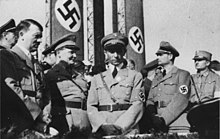
Despite the terror and unprecedented propaganda, the last free General Elections of 5 March 1933, while resulting in 43.9% failed to give the Nazis their desired majority. Together with the German National People's Party (DNVP), however, he was able to form a slim majority government. On 23 March 1933, the Enabling Act marked the beginning of Nazi Germany,[377] allowing Hitler and his cabinet to enact laws on their own without the President or the Reichstag.[378] The Enabling Act formed the basis for the dictatorship and the dissolution of the Länder. Trade unions and all political parties other than the Nazi Party were suppressed. A centralised totalitarian state was established, no longer based on the liberal Weimar constitution. Germany withdrew from the League of Nations shortly thereafter. The coalition parliament was rigged by defining the absence of arrested and murdered deputies as voluntary and therefore cause for their exclusion as wilful absentees. The Centre Party was voluntarily dissolved in a quid pro quo with the Pope under the anti-communist Pope Pius XI for the Reichskonkordat; and by these manoeuvres Hitler achieved movement of these Catholic voters into the Nazi Party, and a long-awaited international diplomatic acceptance of his regime. The Nazis gained a larger share of their vote in Protestant areas than in Catholic areas.[379] The Communist Party was proscribed in April 1933.
Hitler used the SS and Gestapo to purge the entire SA leadership—along with a number of Hitler's political adversaries in the Night of the Long Knives from 30 June to 2 July 1934.[380] As a reward, the SS became an independent organisation under the command of the Reichsführer-SS Heinrich Himmler. Upon Hindenburg's death on 2 August 1934, Hitler's cabinet passed a law proclaiming the presidency to be vacant and transferred the role and powers of the head of state to Hitler.
Antisemitism and the Holocaust

The Nazi regime was particularly hostile towards Jews, who became the target of unending
In 1941, the Nazi leadership decided to implement a plan that they called the "
Military

In 1935, Hitler officially re-established the
Foreign policy
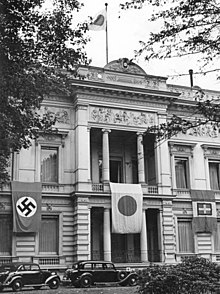
Hitler's diplomatic strategy in the 1930s was to make seemingly reasonable demands, threatening war if they were not met. When opponents tried to appease him, he accepted the gains that were offered, then went to the next target. That aggressive strategy worked as Germany pulled out of the
Having established a "Rome-Berlin axis" with
World War II
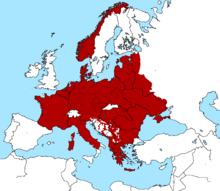
At first Germany was successful in its military operations. In less than three months (April – June 1940), Germany conquered
The tide began to turn in December 1941, when the invasion of the Soviet Union hit determined resistance in the

In 1944–1945, Soviet forces completely or partially liberated
By September 1945, Nazi Germany and its Axis partners (mainly Italy and Japan) had all been defeated, chiefly by the forces of the Soviet Union, the United States, and Great Britain. Much of Europe lay in ruins, over 60 million people worldwide had been killed (most of them civilians), including approximately 6 million Jews and 11 million non-Jews in what became known as the
Germany during the Cold War, 1945–1990
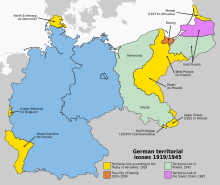
As a consequence of the defeat of Nazi Germany in 1945 and the onset of the Cold War in 1947, the country's territory was shrunk and split between the two global blocs in the East and West, a period known as the division of Germany. Millions of refugees from Central and Eastern Europe moved west, most of them to West Germany. Two countries emerged: West Germany was a parliamentary democracy, a NATO member, a founding member of what since became the European Union as one of the world's largest economies and under allied military control until 1955,[399] while East Germany was a totalitarian Communist dictatorship controlled by the Soviet Union as a satellite of Moscow. With the collapse of Communism in Europe in 1989, reunion followed.
No one doubted Germany's economic and engineering prowess; the question was how long bitter memories of the war would cause Europeans to distrust Germany, and whether Germany could demonstrate it had rejected totalitarianism and militarism and embraced democracy and human rights.[400]
Expulsion
At the
Post-war chaos

The total of
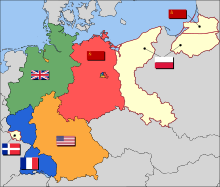
Denazification removed, imprisoned, or executed most top officials of the old regime, but most middle and lower ranks of civilian officialdom were not seriously affected. In accordance with the Allied agreement made at the Yalta Conference, millions of POWs were used as forced labor by the Soviet Union and other European countries.[407]
In the East, the Soviets crushed dissent and imposed another police state, often employing ex-Nazis in the dreaded Stasi. The Soviets extracted about 23% of the East German GNP for reparations, while in the West reparations were a minor factor.[408]
In 1945–1946 housing and food conditions were bad, as the disruption of transport, markets, and finances slowed a return to normal. In the West, bombing had destroyed the fourth of the housing stock,[409] and over 10 million refugees from the east had crowded in, most living in camps.[410] Food production in 1946–1948 was only two-thirds of the prewar level, while grain and meat shipments – which usually supplied 25% of the food – no longer arrived from the East. Furthermore, the end of the war brought the end of large shipments of food seized from occupied nations that had sustained Germany during the war. Coal production was down 60%, which had cascading negative effects on railroads, heavy industry, and heating.[411] Industrial production fell more than half and reached prewar levels only at the end of 1949.[412]
Allied economic policy originally was one of
However, deindustrialization became impractical and the U.S. instead called for a strong industrial base in Germany so it could stimulate European economic recovery.[414] The U.S. shipped food in 1945–1947 and made a $600 million loan in 1947 to rebuild German industry. By May 1946 the removal of machinery had ended, thanks to lobbying by the U.S. Army. The Truman administration finally realised that economic recovery in Europe could not go forward without the reconstruction of the German industrial base on which it had previously been dependent. Washington decided that an "orderly, prosperous Europe requires the economic contributions of a stable and productive Germany".[415][416]
In 1945, the occupying powers took over all newspapers in Germany and purged them of Nazi influence. The American occupation headquarters, the Office of Military Government, United States (OMGUS) began its own newspaper based in Munich, Die Neue Zeitung. It was edited by German and Jewish émigrés who fled to the United States before the war. Its mission was to encourage democracy by exposing Germans to how American culture operated. The paper was filled with details on American sports, politics, business, Hollywood, and fashions, as well as international affairs.[417]
East Germany
On 7 October 1949, the Soviet zone became the "Deutsche Demokratische Republik" – "DDR" ("German Democratic Republic" – "GDR", simply often "East Germany"), under control of the Socialist Unity Party. Neither country had a significant army until the 1950s, but East Germany built the Stasi into a powerful secret police that infiltrated every aspect of its society.[418]
East Germany was an
Walter Ulbricht was the party boss from 1950 to 1971. In 1933, Ulbricht had fled to Moscow, where he served as a Comintern agent loyal to Stalin. As World War II was ending, Stalin assigned him the job of designing the postwar German system that would centralize all power in the Communist Party. Ulbricht became deputy prime minister in 1949 and secretary (chief executive) of the Socialist Unity (Communist) party in 1950.[420] Some 2.6 million people had fled East Germany by 1961 when he built the Berlin Wall to stop them – shooting those who attempted it. What the GDR called the "Anti-Fascist Protective Wall" was a major embarrassment for the program during the Cold War, but it did stabilize East Germany and postpone its collapse.[421][422] Ulbricht lost power in 1971, but was kept on as a nominal head of state. He was replaced because he failed to solve growing national crises, such as the worsening economy in 1969–1970, the fear of another popular uprising as had occurred in 1953, and the disgruntlement between Moscow and Berlin caused by Ulbricht's détente policies toward the West.
The transition to
In 1989, the socialist regime collapsed after 40 years, despite its omnipresent secret police, the Stasi. The main reasons for its collapse included severe economic problems and growing emigration towards the West.
East Germany's culture was shaped by Communism and particularly Stalinism. It was characterized by East German psychoanalyst Hans-Joachim Maaz in 1990 as having produced a "Congested Feeling" among Germans in the East as a result of Communist policies criminalizing personal expression that deviates from government approved ideals, and through the enforcement of Communist principals by physical force and intellectual repression by government agencies, particularly the Stasi.[423] Critics of the East German state have claimed that the state's commitment to communism was a hollow and cynical tool of a ruling elite. This argument has been challenged by some scholars who claim that the Party was committed to the advance of scientific knowledge, economic development, and social progress. However, the vast majority regarded the state's Communist ideals to be nothing more than a deceptive method for government control.[423]
According to German historian Jürgen Kocka (2010):
- Conceptualizing the GDR as a dictatorship has become widely accepted, while the meaning of the concept dictatorship varies. Massive evidence has been collected that proves the repressive, undemocratic, illiberal, nonpluralistic character of the GDR regime and its ruling party.[424]
West Germany (Bonn Republic)

On 23 May 1949, the
Economic miracle

West Germany enjoyed prolonged economic growth beginning in the early 1950s (Wirtschaftswunder or "Economic Miracle").[427] Industrial production doubled from 1950 to 1957, and gross national product grew at a rate of 9 or 10% per year, providing the engine for economic growth of all of Western Europe. Labor unions supported the new policies with postponed wage increases, minimized strikes, support for technological modernization, and a policy of co-determination (Mitbestimmung), which involved a satisfactory grievance resolution system as well as requiring representation of workers on the boards of large corporations.[428] The recovery was accelerated by the currency reform of June 1948, U.S. gifts of $1.4 billion as part of the Marshall Plan, the breaking down of old trade barriers and traditional practices, and the opening of the global market.[429] West Germany gained legitimacy and respect, as it shed the horrible reputation Germany had gained under the Nazis.
West Germany played a central role in the creation of European cooperation; it joined NATO in 1955 and was a founding member of the European Economic Community in 1958.
1948 currency reform

The most dramatic and successful policy event was the currency reform of 1948.[430] Since the 1930s, prices and wages had been controlled, but money had been plentiful. That meant that people had accumulated large paper assets, and that official prices and wages did not reflect reality, as the black market dominated the economy and more than half of all transactions were taking place unofficially. On 21 June 1948, the Western Allies withdrew the old currency and replaced it with the new Deutsche Mark at the rate of 1 new per 10 old. This wiped out 90% of government and private debt, as well as private savings. Prices were decontrolled, and labor unions agreed to accept a 15% wage increase, despite the 25% rise in prices. The result was that prices of German export products held steady, while profits and earnings from exports soared and were poured back into the economy. The currency reforms were simultaneous with the $1.4 billion in Marshall Plan money coming in from the United States, which was used primarily for investment.
In addition, the Marshall Plan forced German companies, as well as those in all of Western Europe, to modernize their business practices and take account of the international market. Marshall Plan funding helped overcome bottlenecks in the surging economy caused by remaining controls (which were removed in 1949), and Marshall Plan business reforms opened up a greatly expanded market for German exports. Overnight, consumer goods appeared in the stores, because they could be sold for realistic prices, emphasizing to Germans that their economy had turned a corner.[410]
The success of the currency reform angered the Soviets, who cut off all road, rail, and canal links between the western zones and West Berlin. This was the Berlin Blockade, which lasted from 24 June 1948 to 12 May 1949. In response, the U.S. and Britain launched an airlift of food and coal and distributed the new currency in West Berlin as well. The city thereby became economically integrated into West Germany.[431] Until the mid-1960s, it served as "America's Berlin", symbolizing the United States' commitment to defending its freedom, which John F. Kennedy underscored during his visit in June 1963.[432]
Adenauer

Konrad Adenauer was the dominant leader in West Germany.[433] He was the first chancellor (top official) of the FRG and until his death was the founder and leader of the Christian Democratic Union (CDU), a coalition of conservatives, ordoliberals, and adherents of Protestant and Catholic social teaching that dominated West Germany politics for most of its history. During his chancellorship, the West Germany economy grew quickly, and West Germany established friendly relations with France, participated in the emerging European Union, established the country's armed forces (the Bundeswehr), and became a pillar of NATO as well as firm ally of the United States. Adenauer's government also commenced the long process of reconciliation with the Jews and Israel after the Holocaust.[434]
Erhard
Ludwig Erhard was in charge of economic policy as economics director for the British and American occupation zones and was Adenauer's long-time economics minister. Erhard's decision to lift many price controls in 1948 (despite opposition from both the social democratic opposition and Allied authorities), plus his advocacy of free markets, helped set the Federal Republic on its strong growth from wartime devastation.[435] Norbert Walter, a former chief economist at Deutsche Bank, argues that "Germany owes its rapid economic advance after World War II to the system of the Social Market Economy, established by Ludwig Erhard."[436][437] Erhard was politically less successful when he served as the CDU Chancellor from 1963 until 1966. Erhard followed the concept of a social market economy, and was in close touch with professional economists. Erhard viewed the market itself as social and supported only a minimum of welfare legislation. However, Erhard suffered a series of decisive defeats in his effort to create a free, competitive economy in 1957; he had to compromise on such key issues as the anti-cartel legislation. Thereafter, the West German economy evolved into a conventional west European welfare state.[438]
Meanwhile, in adopting the Godesberg Program in 1959, the Social Democratic Party of Germany (SPD) largely abandoned Marxism ideas and embraced the concept of the market economy and the welfare state. Instead it now sought to move beyond its old working class base to appeal the full spectrum of potential voters, including the middle class and professionals. Labor unions cooperated increasingly with industry, achieving labor representation on corporate boards and increases in wages and benefits.[439]
Grand coalition

In 1966, Erhard lost support and
Guest workers
With a booming economy short of unskilled workers, especially after the Berlin Wall cut off the steady flow of East Germans, the FRG negotiated migration agreements with Italy (1955), Spain (1960), Greece (1960), and Turkey (1961) that brought in hundreds of thousands of temporary guest workers, called Gastarbeiter. In 1968, the FRG signed a guest worker agreement with Yugoslavia that employed additional guest workers. Gastarbeiter were young men who were paid full-scale wages and benefits, but were expected to return home in a few years.[440]
The agreement with Turkey ended in 1973 but few workers returned because there were few good jobs in Turkey.[441] By 2010 there were about 4 million people of Turkish descent in Germany. The generation born in Germany attended German schools, but had a poor command of either German or Turkish, and had either low-skilled jobs or were unemployed.[442][443]
Brandt and Ostpolitik

Ostpolitik was opposed by the conservative elements in Germany, but won Brandt an international reputation and the Nobel Peace Prize in 1971.[444] In September 1973, both West and East Germany were admitted to the United Nations. The two countries exchanged permanent representatives in 1974, and, in 1987, East Germany's leader Erich Honecker paid an official state visit to West Germany.[445]
Economic crisis of 1970s
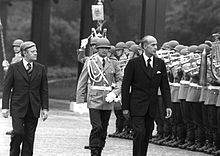
After 1973, Germany was hard hit by a worldwide economic crisis, soaring oil prices, and stubbornly high unemployment, which jumped from 300,000 in 1973 to 1.1 million in 1975. The Ruhr region was hardest hit, as its easy-to-reach coal mines petered out, and expensive German coal was no longer competitive. Likewise the Ruhr steel industry went into sharp decline, as its prices were undercut by lower-cost suppliers such as Japan. The welfare system provided a safety net for the large number of unemployed workers, and many factories reduced their labor force and began to concentrate on high-profit specialty items. After 1990 the Ruhr moved into service industries and high technology. Cleaning up the heavy air and water pollution became a major industry in its own right. Meanwhile, formerly rural Bavaria became a high-tech center of industry.[413]
A spy scandal forced Brandt to step down as Chancellor while remaining as party leader. He was replaced by
The pro-business
Kohl

Reunification
During the summer of 1989, rapid changes known as peaceful revolution or

The opening of the Iron Curtain between Austria and Hungary at the Pan-European Picnic in August 1989 then triggered a chain reaction, at the end of which there was no longer a GDR and the Eastern Bloc had disintegrated. Otto von Habsburg's idea developed the greatest mass exodus since the construction of the Berlin Wall and it was shown that the USSR and the rulers of the Eastern European satellite states were not ready to keep the Iron Curtain effective. This made their loss of power visible and clear that the GDR no longer received effective support from the other communist Eastern Bloc countries.[451][452][453] Thousands of East Germans then tried to reach the West by staging sit-ins at West German diplomatic facilities in other East European capitals, most notably in Prague. The exodus generated demands within East Germany for political change, and mass demonstrations in several cities continued to grow.[454]

Unable to stop the growing civil unrest, Erich Honecker was forced to resign in October, and on 9 November, East German authorities unexpectedly allowed East German citizens to enter West Berlin and West Germany. Hundreds of thousands of people took advantage of the opportunity; new crossing points were opened in the Berlin Wall and along the border with West Germany. This led to the acceleration of the process of reforms in East Germany that ended with the dissolution of East Germany and the German reunification that came into force on 3 October 1990.[455]
Federal Republic of Germany, 1990–present
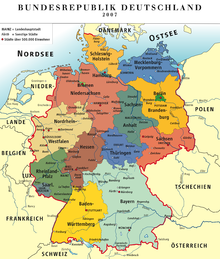
The SPD/Green coalition won the 1998 elections and SPD leader
On 26 December 2004 during Boxing Day celebration, about more than nearly 540 Germans have died and many more thousands of Germans are missing from Indian Ocean tsunami from Indonesian earthquake while vacationing in Southern Thailand.[citation needed]
In 2005, after the SPD lost to the
In the
Together with France, Italy, Netherlands, and other EU member nations, Germany has played the leading role in the
Since 1990, German Bundeswehr has participated in a number of peacekeeping and disaster relief operations abroad. Since 2002, German troops formed part of the International Security Assistance Force in the War in Afghanistan, resulting in the first German casualties in combat missions since World War II.
In light of the worldwide Great Recession that began in 2008, Germany did not experience as much economic hardship as other European nations. Germany later sponsored a massive financial rescue in the wake of the Eurozone crisis which affected the German economy.
Following the
Germany was affected by the
German government response to the COVID-19 pandemic (2020-22)
In January 2020, Germany has confirmed the first case of novel coronavirus, found from Wuhan, China. In March 2020, Germany went to the national lockdowns, which was greatly affected by the pandemic, and greatly impact on German economy, healthcare system, and society, and also commended for being an effective model for instituting methods of curbing infections and deaths, but lost this status by the end of the year due to rising number of cases, hospitalizations, and deaths. In December 2020, COVID-19 vaccines began to be administered in Germany. Unfortunately, from June 2021 to the end of March 2022, Germany has might seeing a new surge of huge COVID-19 infection wave, fueled by the highly transmissible Deltacron hybrid variant, which is combined of Delta and Omicron mutations. However, Germany has suffered from a recombination event of Deltacron, which was caused of less access to vaccine shortage in the first quarter. As of May 2022, Germany has reported 140,292 COVID-19-related deaths, the fifth highest mortality toll (Behind Russia, the United Kingdom, Italy, and France), out of 2 million deaths in Europe.[467]
On 8 April 2022 just after the first two years of pandemic, Germany joined France, Italy, Netherlands, Belgium, Luxembourg, Austria, Switzerland, Greece, Turkey, and Cyprus were lifted all COVID-19 restrictions, measures, and state of emergencies up in the future.[citation needed]
Post-COVID period (Since 2022)
On 8 December 2021 just three months after Germany's centre-left Social Democrats (SPD) narrowly won the federal election, ending 16 years of conservative-led rule under Angela Merkel, Social Democrat Olaf Scholz was sworn in as Germany's new chancellor. He formed a coalition government with the Green Party and the liberal Free Democrats.[468][469]
In February 2022, Frank-Walter Steinmeier was elected for a second five-year term as Germany's president. Although largely ceremonial post, he has been seen as a symbol of consensus and continuity.[470]
After
As of December 2023, Germany is the fourth largest economy in the world after the United States, China and Japan and the largest economy in Europe. It is the third largest export nation in the world.[474]
See also
- Historiography of Germany
- Conservatism in Germany
- Economic history of Germany
- History of Berlin
- History of German foreign policy
- History of German journalism
- History of the Jews in Germany
- History of women in Germany
- List of chancellors of Germany
- List of German monarchs
- Military history of Germany
- Names of Germany
- Politics of Germany
- Territorial evolution of Germany
- Timeline of German history
Notes
- ^ "By no means all the Imperial Estates, for example, participated in the Reichstag. Not every vassal of the emperor, even in the German lands, participated in the emerging political system from the start. In the period around 1500 what might be described as the political nation was largely confined to the south, to the old Hohenstaufen core territories south of the Main and the Saale, to the areas between Alsace in the west and the Austrian duchies in the east, where the Habsburgs had extended their territories and around them, their clientele.", pg. 39.[168]
- ^ "[...] it is a tribute to his success that what emerged by the end of his reign was not an oligarchy of princes but a strengthened monarchy", pg. 75; "The Reich emerged from the reforms of 1495 and 1500 as a polity in which the emperor and the Estates coexisted, but also competed, in uneasy equilibrium", pg. 95.[170]
- ^ In the end, while the Reformation emphasis on Protestants reading the Scriptures was one factor in the development of literacy, the impact of printing itself, the wider availability of printed works at a cheaper price, and the increasing focus on education and learning as key factors in obtaining a lucrative post, were also significant contributory factors.[185]
References
- ^ McRae, Mike (6 November 2019). "We Just Found an 11-Million-Year-Old Ancestor That Hints How Humans Began to Walk". ScienceAlert.
- PMID 21041630.
- doi:10.3390/h8030129.
- ISBN 978-3-8062-2164-0. Retrieved 1 March 2019.
- ^ Kleinhubbert, Guido (20 April 2020). "Vogelkiller aus der Steinzeit". SPIEGEL Akademie. Retrieved 23 April 2020.
- ^ http://stanzon.husemann.net/download.php?id=201533&type=T [bare URL]
- PMID 10377375.
- PMID 38297138.
- S2CID 205216692.
- better source needed]
- ^ "The Venus of Hohle Fels". donsmaps.com.
- ^ "Earliest music instruments found". BBC News. 25 May 2012.
- PMID 24901650.
- ^ "3400 BC: The oldest evidence for the use of the wheel and wagon originates from Northern Germany". Kiel University. 2022.
- ^ "Nebra Sky Disc". Halle State Museum of Prehistory.
- PMID 25731166.
- PMID 29466337.
- ^ Louwen, A.J (2021). Breaking and making the ancestors. Piecing together the urnfield mortuary process in the Lower-Rhine-Basin, c. 1300–400 BC (PhD). Leiden University.
- ISBN 978-3570022375.
- ^ Chadwick and Corcoran, Nora and J.X.W.P. (1970). The Celts. Penguin Books. pp. 28–29.
- S2CID 234471370.
- PMID 34410492.
- ^ Saupe et al. 2021 "The results suggest that the Steppe-related ancestry component could have first arrived through Late N/Bell Beaker groups from Central Europe."
- ^ "Celtic City: Staatliche Schlösser und Gärten Baden-Württemberg".
- ^ "Heuneburg – Celtic city of Pyrene".
- ^ "Heuneburg (Herbertingen-Hundersingen)". Landeskunde Online. Retrieved 17 April 2020.
- ^ Herodotus (1857). Herodoti Musae. in bibliopolio Hahniano.
- ^ Herodotus (1829). Herodoti historiarum libri IX. G. Fr. Meyer. pp. 110–.
- ISBN 978-3-1116-6814-7.
- ISBN 978-0-3064-7257-2.
- ISBN 978-0-4151-5090-3.
- ISBN 0-14-051054-0.
- ISBN 0-85229-571-5.
- ISBN 978-90-04-28952-9.
- ^ Kristinsson 2010, p. 147: "In the 1st century BC it was the Suebic tribes who were expanding most conspicuously. [...] Originating from central Germania, they moved to the south and southwest. [...] As Rome was conquering the Gauls, Germans were expanding to meet them, and this was the threat from which Caesar claimed to be saving the Gauls. [...] For the next half-century the expansion concentrated on southern Germany and Bohemia, assimilating or driving out the previous Gallic or Celtic inhabitants. The oppida in this area fell and were abandoned one after another as simple, egalitarian Germanic societies replaced the complex, stratified Celtic ones."
- ^ Green 2003, p. 29: "Greek may have followed the Persians in devising its terms for their military formations, but the Goths were dependent [...] on Iranians of the Pontic region for terms which followed the Iranian model more closely in using the cognate Gothic term for the second element of its compounds. (Gothic dependence on Iranian may have gone even further, affecting the numeral itself, if we recall that the two Iranian loanwords in Crimean Gothic are words for 'hundred' and 'thousand')."
- ^ Fortson 2011, p. 433: "Baltic territory began to shrink shortly before the dawn of the Christian era due to the Gothic migrations into their southwestern territories [...]."
- ^ Green 2000, pp. 172–173: "Jordanes [...] mentions the Slavs (Getica 119) and associates them more closely than the Balts with the center of Gothic power. [...] This location of the early Slavs partly at least in the region covered by the Cernjahov culture, together with their contacts (warlike or not) with the Goths under Ermanric and almost certainly before, explains their openness to Gothic loanword influence. That this may have begun early, before the expansion of the Slavs from their primeval habitat, is implied by the presence of individual loan-words in a wide range of Slavonic languages."
- ^ Claster 1982, p. 35.
- S2CID 162278924.
- ^ Julius Caesar, Commentarii de Bello Gallico 1.31–53
- ^ C. Julius Caesar. "C. Julius Caesar, Gallic War". Perseus Project. Retrieved 20 March 2019.
- ^ Bordewich 2005.
- ^ Ozment 2004, pp. 2–21.
- ^ Fichtner 2009, p. xlviii.
- ^ "The Journal of the Anthropological Society of Bombay". The Journal of the Anthropological Society of Bombay. 10: 647. 1917.
- ^ Ramirez-Faria 2007, p. 267.
- ^ Rüger 2004, pp. 527–528.
- ^ "Lecture 23 – Rome of Constantine and a New Rome: Overview". Open Yale Courses. Yale University. Retrieved 22 November 2021.
- ^ Bowman, Garnsey & Cameron 2005, p. 442.
- ^ Heather 2010.
- ISBN 978-0-5214-3491-1.
- ^ Heather 2006, p. 349: "By 469, just sixteen years after [Attila's] death, the last of the Huns were seeking asylum inside the eastern Roman Empire."
- OL 11194180M.
For on the bitterly cold night of December 31, 406, there was apparently no Roman army on guard when a host of Vandal, Alan, Suevi and Burgundian warriors, with their families and possessions, crossed the frozen Rhine and headed southwest through Gaul. This time, Rome's frontiers had been breached by barbarians who meant to stay.
- ^ Bradbury 2004, p. 154: "East Francia consisted of four main principalities, the stem duchies – Saxony, Bavaria, Swabia and Franconia."
- ^ Rodes 1964, p. 3: "It was plagued by the existence of immensely strong tribal duchies, such as Bavaria, Swabia, Thuringia, and Saxony – often referred to as stem duchies, from the German word Stamm, meaning tribe [...]."
- ^ Historicus 1935, p. 50: "Franz von Lothringen muß sein Stammherzogtum an Stanislaus Leszinski, den französischen Kandidaten für Polen, ueberlassen [...]. [Francis of Lorraine had to bequeath his stem-duchy to Stanislaus Leszinski, the French candidate for the Polish crown [...].]"
- ^ Compare:
Langer, William Leonard, ed. (1968). "ANCIENT HISTORY". An encyclopedia of world history: ancient, medieval and modern, chronologically arranged (4 ed.). Harrap. p. 174.
These stem duchies were: Franconia [...]; Lorraine (not strictly a stem duchy but with a tradition of unity); Swabia [...] .
- ^ Clover, Frank M. (1999), "A Game of Bluff: The Fate of Sicily after A.D. 476", Historia: Zeitschrift für Alte Geschichte, 48 (1): 235–244, JSTOR 4436542, p. 237.
- ^ a b Wilson 2016, p. 24.
- ^ "Gregory of Tours (539–594): The Conversion of Clovis, 42. When they were dead Clovis received all their kingdom and treasures". Sourcebooks. Retrieved 2 March 2019.
- ^ Kibler 1995, p. 1159: "From time to time, Austrasia received a son of the Merovingian king as an autonomous ruler."
- ISBN 978-0-8166-5700-1.
- ^ Thompson, James Westfall (1928). "Old Saxony". Feudal Germany. University of Chicago Press. pp. 167ff. Retrieved 4 March 2019.
- ^ Van Dam 1995, p. 222: "Surrounding the core of Frankish kingdoms were other regions more or less subservient to the Merovingian kings. In some regions the Merovingians appointed, or perhaps simply acknowledged, various dukes, such as the duke of the Alamans, the duke of the Vascones in the western Pyrenees, and the duke of the Bavarians. [...] Since these dukes, unlike those who served at the court of the Merovingians or administered particular regions in the Merovingian kingdoms, ruled over distinct ethnic groups, they had much local support and tended to act independently of the Merovingians, and even to make war on them occasionally."
- JSTOR 124766.
- ^ Damminger 2003, p. 74: "The area of Merovingian settlement in southwest Germany was pretty much confined to the so called 'Altsiedelland', those fertile regions which had been under the plough since neolithic times [...]."
- ^ Drew 2011, pp. 8–9: "Some of the success of the Merovingian Frankish rulers may be their acceptance of the personality of law policy. Not only did Roman law remain in use among Gallo-Romans and churchmen, Burgundian law among the Burgundians, and Visigothic law among the Visigoths, but the more purely Germanic peoples of the eastern frontier were allowed to retain their own 'national' law."
- ^ Hen 1995, p. 17: "Missionaries, mainly from the British Isles, continued to operate in the Merovingian kingdoms throughout the sixth to the eighth centuries. Yet, their efforts were directed at the fringes of the Merovingian territory, that is, at Frisia, north-east Austrasia and Thuringia. These areas were hardly Romanised, if at all, and therefore lacked any social, cultural or physical basis for the expansion of Christianity. These areas stayed pagan long after Merovingian society completed its conversion, and thus attracted the missionaries' attention. [...] Moreover, there is evidence of missionary and evangelising activity from Merovingian Gual, out of places like Metz, Strasbourg or Worms, into the 'pagan regions' [...]."
- ISBN 978-1-5760-7263-9.
- ^ Wilson 2016, p. 25.
- ISBN 978-1-4443-9020-9.
- ^ Wilson 2016, p. 26.
- ^ Wilson 2016, pp. 26–27.
- ^ a b c Nelson, Janet L. (1998), Charlemagne's church at Aachen, vol. 48, History Today, pp. 62–64
- ISBN 978-1-118-88791-2.
- ^ a b Schulman 2002, pp. 325–327.
- ^ "Aachen Cathedral". UNESCO World Heritage Centre, Outstanding Universal Value. Retrieved 18 March 2019.
- ^ Barraclough 1984, p. 59.
- S2CID 159994750.
- ISBN 978-0-5214-4049-3.
- ISBN 978-1-1366-3944-9.
- ^ "Collegiate Church, Castle and Old Town of Quedlinburg". UNESCO World Heritage Centre. United Nations Educational, Scientific, and Cultural Organization. Retrieved 25 June 2022.
- ^ Dirscherl, Simon (23 May 2005). "The clerical reform movement and the investiture controversy". University Passau. Archived from the original on 7 March 2019. Retrieved 6 March 2019.
- JSTOR j.ctt3fht77.
- ^ "What is the significance of the "Investiture Controversy?"". E Notes. Retrieved 2 March 2019.
- ^ Baldwin, Marshall W., ed. (1969). A History of the Crusades. Vol. I: The first hundred years. Madison: University of Wisconsin. Retrieved 2 March 2019.
- ^ Crawford, Paul. "The Military OrdersL Intrioduction". ORB Encyclopedia. Archived from the original on 6 October 2014. Retrieved 2 March 2019.
- ^ "The Official Name of the Holy Roman Empire". Holy Roman Empire Association. Retrieved 2 March 2019.
- ^ Wilson 2016, p. 19.
- ^ Day 1914, p. 252.
- ^ Thompson 1931, pp. 146–179.
- ^ Translation of the grant of privileges to merchants in 1229: Halsall, Paul. "Medieval Sourcebook: Privileges Granted to German Merchants at Novgorod, 1229". Fordham.edu. Retrieved 6 March 2019.
- ^ Istvan Szepesi, "Reflecting the Nation: The Historiography of Hanseatic Institutions". Waterloo Historical Review 7 (2015). online Archived 5 September 2017 at the Wayback Machine
- ^ Rothbard, Murray N. (23 November 2009). "The Great Depression of the 14th Century". Mises Institute. Retrieved 14 March 2019.
- ISBN 978-1-3518-8483-9.
- ISBN 978-1-3518-9008-3.
- ISBN 978-3-6400-4806-9. Retrieved 7 March 2019.
- ISBN 9-6305-4203-Xhttp://mek.oszk.hu/02100/02109/html/59.html#67
- ISBN 978-3-8658-3165-1.
- ^ Carsten 1958, pp. 52–68.
- ^ "Staat des Deutschen Ordens". Ordensstaat de. Retrieved 7 March 2019.
- ^ Blumenthal, Uta-Renate (1991). The Investiture Controversy: Church and Monarchy from the Ninth to the Twelfth Century. pp. 159–173.
- ^ a b Fuhrmann 1986.
- ^ Kahn, Robert A. (1974). A History of the Habsburg Empire 1526–1918. p. 5.
- ^ "The Peace of Venice; 1177". Yale Law School. Archived from the original on 25 August 2006. Retrieved 14 March 2019.
- ISBN 978-1-3519-5035-0.
- ISBN 978-0-5200-6634-2.
- ISBN 978-0-5200-7270-1.
- ^ Kantorowicz, Ernst (1957). Frederick the Second, 1194–1250.
- JSTOR 3153729.
- ^ "The Golden Bull of the Emperor Charles IV 1356 A.D." Lillian Goldman Law Library. Retrieved 18 March 2019.
- OL 8167121M.
- ^ Haverkamp, Alfred. "Jews in the Medieval German Kingdom" (PDF). University of Trier. Retrieved 19 March 2019.
- ^ Fuhrmann 1986, pp. 11ff.
- ^ Allen, Robert C. "Economic structure and agricultural productivity in Europe, 1300-1800, page 9" (PDF). University of British Columbia. Retrieved 19 March 2019.
- ^ Haverkamp, Alfred (1988). Medieval Germany, 1056–1273. Oxford University Press.
- ^ Nicholas, David (1997). The Growth of the Medieval City: From Late Antiquity to the Early Fourteenth Century. Longman. pp. 69–72, 133–142, 202–220, 244–245, 300–307.
- ISBN 978-0-8130-0448-8.
- ^ Huffman, Joseph P. (1998). Family, Commerce, and Religion in London and Cologne. – covers from 1000 to 1300.
- ISBN 978-1-884446-05-4.
- ^ extent.https://www.scientificlib.com/en/Mathematics/Biographies/AdamRies.html#:~:text=Adam%20Ries%20is%20generally%20considered%20to%20be%20the,more%20structured%20Arabic%20numerals%20to%20a%20large%20extent.
- OCLC 4478114. Retrieved 7 January 2024.
- ^ ISBN 9781615305445
- ^ "Georgius Agricola". University of California - Museum of Paleontology. Retrieved 4 April 2019.
- ^ Zwingenberger, 9.
- ^ Silver, Larry. "Albrecht Dürer, The Triumphal Arch or Arch of Honor – Smarthistory". smarthistory.org. Retrieved 3 March 2022.
- ISBN 978-0-3132-9102-9.
- ISBN 978-3-2057-7305-4. Retrieved 18 January 2022.
- ISBN 978-0-8139-3258-3. Retrieved 18 January 2022.
- ISBN 978-0-8743-6944-1. Retrieved 4 March 2022.
- ISBN 978-3-9029-6603-2. Retrieved 18 January 2022.)
{{cite book}}: CS1 maint: multiple names: authors list (link - ISBN 978-0-3133-3733-8. Retrieved 3 March 2022.
- ISBN 978-0-6698-5555-5. Retrieved 3 March 2022.
- ^ Eckert, Daniel (6 June 2016). "So wurde Fugger zum reichsten Menschen der Geschichte". Die Welt. Welt. Retrieved 18 March 2019.
- ^ Schwope, David. "The Death of the Knight: Changes in Military Weaponry during the Tudor Period" (PDF). Academic Forum. Archived from the original (PDF) on 28 November 2015. Retrieved 18 March 2019.
- ^ Stollberg-Rilinger 2021, pp. 46, 47.
- ^ Wilson 2016, p. ii.
- ISBN 978-3-1104-5673-8. Retrieved 15 February 2022.
- ISBN 978-0-3079-6230-0. Retrieved 2 March 2022.
- ^ Wilson 2016, pp. ii, 260, 266, 277, 419.
- ^ Stollberg-Rilinger 2021, pp. 46–53.
- ISBN 978-1-4833-6467-4. Archivedfrom the original on 26 September 2021. Retrieved 20 September 2021.
- ^ Kersken, Uwe (2014). "Die letzten ihrer Art". Die Welt der Ritter. Zweites Deutsches Fernsehen(zdf).
- ISBN 978-9-0619-4020-3. Retrieved 3 March 2022.
- JSTOR 48578016.
- ^ Wilson 2016, p. 2.
- .
- ISBN 978-1-1395-0230-6. Retrieved 7 February 2022.
- ISBN 978-3-5253-6710-0. Retrieved 8 February 2022.
- ^ a b Stollberg-Rilinger 2021, p. 52.
- ISBN 978-0-1910-6244-5. Retrieved 20 November 2021.
- ISBN 978-1-1343-8280-4. Retrieved 20 November 2021.
- ISBN 978-1-1070-1134-2. Retrieved 20 November 2021.
- ISBN 978-1-3518-8840-0. Retrieved 20 November 2021.
- ISBN 978-3-4867-0179-1. Retrieved 14 February 2022.
- ISBN 978-3-1701-5563-3. Retrieved 14 February 2022.
- ISBN 978-3-1104-2400-3. Retrieved 14 February 2022.
- ISBN 978-9-0043-5396-1. Retrieved 14 February 2022.
- ^ Whaley 2011, pp. 76, 77.
- ^ Müller 2003, p. 298.
- ^ Brady 2009, p. 111.
- ^ Whaley 2011, p. 74.
- ^ Whaley 2011, p. 115.
- ^ Whaley, Joachim. "Whaley on Silver, "Marketing Maximilian: the Visual Ideology of a Holy Roman Emperor" H-German H-Net". networks.h-net.org. Retrieved 3 March 2022.
- ISBN 978-0-5200-9694-3. Archivedfrom the original on 27 September 2021. Retrieved 21 September 2021.
- S2CID 186566355.
- ^ Whaley 2011, pp. 12, 39, 40, 50, 72, 80.
- ^ Stollberg-Rilinger 2021, p. 47.
- ^ Whaley 2011, p. 27, 75.
- ISBN 978-0-1987-3101-6. Retrieved 26 February 2022.
- ^ Whaley 2011, p. 17, 73.
- ^ a b Dittmar, Jeremiah; Seabold, Skipper. "Media, Markets and Institutional Change: Evidence from the Protestant Reformation" (PDF). CEP. Retrieved 19 March 2019.
- ^ John Lotherington, The German Reformation (2014)
- ^ Michael G. Baylor, The German Reformation and the Peasants' War: A Brief History with Documents (2012)
- ^ John Lotherington, The Counter-Reformation (2015)
- ^ a b Adams 1997, pp. 138–191.
- .
- ^ Wilson, Peter H. (2009). The Thirty Years War: Europe's Tragedy.
- ^ Geoffrey Parker, The Thirty Years' War (1997) p. 178 has 15–20% decline; Tryntje Helfferich, The Thirty Years' War: A Documentary History (2009) p. xix, estimates a 25% decline. Wilson (2009) pp. 780–795 reviews the estimates.
- ISBN 978-0-1987-3101-6.
- ^ ISBN 978-0-19-934037-8.
- ^ Holborn 1959, p. 37.
- ISBN 978-0-1995-4785-2.[page needed]
- ^ Pettegree Reformation World p. 543
- ^ Rubin, "Printing and Protestants" Review of Economics and Statistics pp. 270–286
- ^ "Media, Markets and Institutional Change: Evidence from the Protestant Reformation" (PDF). Archived (PDF) from the original on 9 October 2022.
- ^ Edwards, Mark U. Jr. (1994). Printing, Propaganda, and Martin Luther.
- ^ See texts at Project Wittenberg: "Selected Hymns of Martin Luther"
- ^ Weimer, Christoph (2004). "Luther and Cranach on Justification in Word and Image". Lutheran Quarterly. 18 (4): 387–405.
- ^ Stolt, Birgit (2014). "Luther's Translation of the Bible". Lutheran Quarterly. 28 (4): 373–400.
- ISBN 978-0-6911-8331-2. Retrieved 20 February 2022.
- ISBN 978-9-0042-5029-1. Retrieved 20 February 2022.
- ISBN 978-9-0041-6098-9. Retrieved 20 February 2022.
- ISBN 978-0-3002-2068-1. Retrieved 6 January 2022.
- ISBN 978-1-4051-7202-8. Retrieved 6 January 2022.
- ^ The Germanic Review. Heldref Publications. 1951. p. 148. Retrieved 6 January 2022.
- ISBN 978-0-2268-1681-4. Retrieved 6 January 2022.
- ISBN 978-9-0042-1632-7. Retrieved 4 March 2022.
- ^ Johnson, Claes (2011). Many Minds Relativity. Claes Johnson. p. 68. Retrieved 4 March 2022.
- ISBN 978-1-8454-0649-3. Retrieved 4 March 2022.
- ISBN 978-0-8511-5770-2. Archivedfrom the original on 29 October 2021. Retrieved 29 October 2021.
- ^ Cortesão, Armando (1969). History of Portuguese Cartography. Junta de Investigações do Ultramar. p. 124. Retrieved 13 November 2021.
- ISBN 978-0-1915-0090-9. Retrieved 8 November 2021.
- ^ Noflatscher 2011, p. 245.
- ISBN 978-0-5218-0040-2. Retrieved 7 November 2021.
- ISBN 978-0-1925-2018-0. Retrieved 7 November 2021.
- ^ Hayton 2015, p. 92.
- ^ Stillman Drake, "Copernicanism in Bruno, Kepler, and Galileo." Vistas in Astronomy 17 (1975): 177–192 online Archived 15 October 2021 at the Wayback Machine.
- ^ "DPMA | Johannes Kepler".
- ^ "Archived copy". Archived from the original on 24 June 2021. Retrieved 1 September 2023.
{{cite web}}: CS1 maint: archived copy as title (link) - ^ "Molecular Expressions: Science, Optics and You - Timeline - Johannes Kepler".
- ^ Philip G. Dwyer, ed. The rise of Prussia: Rethinking Prussian history, 1700–1830 pp. 1–26.
- hdl:10419/37227.
- ^ Clark 2006, pp. 78–94.
- ISBN 978-0-5210-3012-0. Retrieved 30 August 2022.
- ISBN 978-0-4297-0934-0. Retrieved 30 August 2022.
- ^ a b c Sheehan 1989, pp. 75, 207–291, 291–323, 324–371, 802–820.
- ^ Sagarra 1977, p. 22.
- ^ "treaty of Ryswick". Oxford Reference.
- ISBN 978-0-9850-6233-0.
- ^ "Eugen Prinz von Savoyen". Deutsche Biographie. Retrieved 21 March 2019.
- ISBN 978-1-3178-8793-5.
- ^ Dennis Showalter, Frederick the Great: A Military History (2012)
- ISBN 978-0-2532-1707-3.
- ISBN 978-1-3493-7221-8.
- ISBN 978-0-1995-9396-5.
- ^ Lucjan R. Lewitter, "The Partitions of Poland" in A. Goodwyn, ed. The New Cambridge Modern History: vol 8 1763–93 (1965) pp. 333–359
- ^ Holborn 1964, pp. 291–299.
- ^ Holborn 1964, pp. 299–302.
- ^ Ingrao, Charles W. (2003). The Hessian Mercenary State: Ideas, Institutions, and Reform under Frederick II, 1760–1785.
- JSTOR 1005911.
- ^ Holborn 1964, pp. 291–302.
- ^ Marion W. Gray, Productive men, reproductive women: the agrarian household and the emergence of separate spheres during the German Enlightenment (2000).
- ^ Nipperdey 1996, ch 2.
- ^ Marion W. Gray and June K. Burton, "Bourgeois Values in the Rural Household, 1810–1840: The New Domesticity in Germany", The Consortium on Revolutionary Europe, 1750–1850 23 (1994): 449–456.
- ^ Eda Sagarra, An introduction to Nineteenth century Germany (1980) pp. 231–233.
- ^ Ford, Guy Stanton (1922). Stein and the era of reform in Prussia, 1807–1815. Princeton University Press. pp. 199–220.
- ^ Brakensiek, Stefan (April 1994), "Agrarian Individualism in North-Western Germany, 1770–1870", German History, vol. 12, no. 2, pp. 137–179
- ^ Gagliardo, John G. (1991). Germany under the Old Regime, 1600–1790. pp. 217–234, 375–395.
- ^ "Edict of Potsdam, October 29, 1685". Deutsche Geschichte in Quellen und Darstellung. Retrieved 26 March 2019.
- ^ Charles W. Ingrao, "A Pre-Revolutionary Sonderweg". German History 20#3 (2002), pp. 279–286.
- ^ Katrin Keller, "Saxony: Rétablissement and Enlightened Absolutism". German History 20.3 (2002): 309–331.
- ^ Richter, Simon J., ed. (2005), The Literature of Weimar Classicism
- ^ Owens, Samantha; Reul, Barbara M.; Stockigt, Janice B., eds. (2011). Music at German Courts, 1715–1760: Changing Artistic Priorities.
- ^ Kuehn, Manfred (2001). Kant: A Biography.
- ^ "Immanuel Kant "An Answer to the Question: What is Enlightenment?"". Internet Modern History Sourcebook. Archived from the original on 17 February 2020. Retrieved 26 March 2019.
- ^ Van Dulmen, Richard; Williams, Anthony, eds. (1992). The Society of the Enlightenment: The Rise of the Middle Class and Enlightenment Culture in Germany.
- ^ James J. Sheehan, German History, 1770–1866 (1993) pp. 207–288
- ^ Connelly, Owen (1966). "6". Napoleon's satellite kingdoms. New York, Free Press.
- ^ a b Raff, Diethher (1988), History of Germany from the Medieval Empire to the Present, pp. 34–55, 202–206
- JSTOR 1985399.
- ^ Nicholas Saul, ed. The Cambridge companion to German romanticism (Cambridge University Press, 2009) ch 1.
- ^ Carr 1991, pp. 1–2.
- ^ a b Lee 1985, pp. 332–346.
- ^ Sagarra 1977, pp. 37–55, 183–202.
- ^ Nipperdey 1996, p. 86.
- ^ Nipperdey 1996, pp. 87–92, 99.
- ^ Kopsidis, Michael; Bromley, Daniel W. "The French Revolution and German industrialization: The new institutional economics rewrites history" (PDF). Leibniz Institute of Agricultural Development in Transition Economies. Retrieved 13 April 2019.
- ^ ISBN 978-1-8454-5136-3.
- ^ Tilly, Richard (1967), "Germany: 1815–1870", in Cameron, Rondo (ed.), Banking in the Early Stages of Industrialization: A Study in Comparative Economic History, Oxford University Press, pp. 151–182
- ^ Nipperdey 1996, p. 178"On the whole, industrialisation in Germany must be considered to have been positive in its effects. Not only did it change society and the countryside, and finally the world...it created the modern world we live in. It solved the problems of population growth, under-employment and pauperism in a stagnating economy, and abolished dependency on the natural conditions of agriculture, and finally hunger. It created huge improvements in production and both short- and long-term improvements in living standards. However, in terms of social inequality, it can be assumed that it did not change the relative levels of income. Between 1815 and 1873 the statistical distribution of wealth was on the order of 77% to 23% for entrepreneurs and workers respectively. On the other hand, new problems arose, in the form of interrupted growth and new crises, such as urbanisation, "alienation", new underclasses, proletariat and proletarian misery, new injustices and new masters and, eventually, class warfare."
- ^ Stolper 2017, ch 1.
- ^ Nipperdey 1996, pp. 96–97.
- ^ Nipperdey 1996, p. 165.
- ^ Hamerow, Theodore S. (1969). The Social Foundations of German Unification, 1858–1871: Ideas and Institutions. pp. 284–291.
- ^ Olson, Kenneth E. (1966). The history makers: The press of Europe from its beginnings through 1965. LSU Press. pp. 99–134.
- ^ Elmer H. Antonsen, James W. Marchand, and Ladislav Zgusta, eds. The Grimm brothers and the Germanic past (John Benjamins Publishing, 1990).
- ^ Clark 2006, pp. 412–419.
- JSTOR 2639865
- ^ Holborn 1964, pp. 485–491.
- ^ Clark 2006, pp. 419–421.
- ^ Holborn 1964, pp. 498–509.
- ^ Taylor, A.J.P. (2001). The Course of German History. p. 52.
- S2CID 144652797.
- ^ Wittke, C. F. (1952). Refugees of Revolution: The German Forty-Eighters in America. Philadelphia: University of Pennsylvania Press.
- ^ Holborn 1969, pp. 131–167.
- OL 26785882M.
- ^ Holborn 1969, pp. 167–188.
- ^ Feuchtwanger 2014, pp. 99–147.
- ^ Gordon A. Craig, Germany, 1866–1945 (1978) pp. 11–22.
- ^ Jonathan Sperber, "Review," Journal of Modern History 85#3 (2012), pp. 768–769.
- ^ Rüstow, Wilhelm (1872). The War for the Rhine Frontier, 1870: Its Political and Military History. Blackwood.
- ^ McCabe, James D. (1871). History of the war between Germany and France. HathiTrust Digital Library. Retrieved 23 March 2019.
- ^ Tonge, Stephen (11 November 2013). "Bismarck's Domestic Polices 1871 -1890". History Home. Retrieved 22 March 2019.
- S2CID 154596279.
- .
- ^ ISBN 978-963-386-017-5.
- ^ Wright, Patrick (9 September 2006). "A fistful of Fredericks – He considers the "invention of tradition" in Prussia, and the importance of memorials and ceremonies of remembrance in shaping patriotic identity". Guardian. Retrieved 23 March 2019.
- ^ "A German Voice of Opposition to Germanization (1914)". German History in Documents and Images. German Historical Institute. Retrieved 18 May 2019.
- ^ "Germanization Policy: Speech by Ludwik Jazdzewski in a Session of the Prussian House of Representatives (January 15, 1901)". German History in Documents and Images. German Historical Institute. Retrieved 18 May 2019.
- S2CID 160827181.
- ^ Clark 2006, pp. 158, 603–623.
- ^ Wehler, Hans-Ulrich. "Hans Ulrich Wehler-The German Empire 1871-1918-Berg (1985)". Scribd. p. 157. Retrieved 31 March 2019.
- ^ Richie 1998, p. 207.
- ^ Blackbourn 1998, p. 32.
- ISBN 978-0-8047-4641-0.
- ISBN 978-0-8604-3450-4.
- ^ Hennock, E. P. (2007), The Origin of the Welfare State in England and Germany, 1850–1914: Social Policies Compared
- ^ Beck, Hermann (1995), Origins of the Authoritarian Welfare State in Prussia, 1815–1870
- S2CID 154458964
- S2CID 154067344
- JSTOR 23916757
- ^ John C.G. Roehl, "Higher civil servants in Germany, 1890–1900" in James J. Sheehan, ed., Imperial Germany (1976) pp. 128–151
- JSTOR 1906016
- ^ Anthony J. Steinhoff, "Christianity and the creation of Germany", in Sheridan Gilley and Brian Stanley, eds., Cambridge History of Christianity: Volume 8: 1814–1914 (2008) p. 295
- ^ John K. Zeender in The Catholic Historical Review, Vol. 43, No. 3 (Oct. 1957), pp. 328–330.
- ^ Rebecca Ayako Bennette, Fighting for the Soul of Germany: The Catholic Struggle for Inclusion after Unification (Harvard U.P. 2012)
- S2CID 39447688.
- ^ Clark 2006, pp. 568–576.
- ^ Ronald J. Ross, The failure of Bismarck's Kulturkampf: Catholicism and state power in imperial Germany, 1871–1887 (1998).
- The Great Courses. Event occurs at 06:37-11:02. Retrieved 27 March 2023.
- ^ Weitsman, Patricia A. (2004), Dangerous alliances: proponents of peace, weapons of war, p. 79
- ^ Belgum, Kirsten (1998). Popularizing the Nation: Audience, Representation, and the Production of Identity in "Die Gartenlaube", 1853–1900. p. 149.
- ISBN 978-3-1701-2097-6.
- ^ Kroll, Franz-Lothar (2000), "Wilhelm II. (1888–1918)", in Kroll, Franz-Lothar (ed.), Preussens Herrscher. Von den ersten Hohenzollern bis Wilhelm II. (in German), Munich: C. H. Beck, p. 290
- ^ Christopher Clark, Kaiser Wilhelm II (2000) pp. 35–47
- ^ John C. G. Wilhelm II: the Kaiser's personal monarchy, 1888–1900 (2004).
- ^ On the Kaiser's "histrionic personality disorder", see Tipton (2003), pp. 243–245
- S2CID 163767674.
- ^ Woodward, David (July 1963). "Admiral Tirpitz, Secretary of State for the Navy, 1897–1916". History Today. 13 (8): 548–555.
- ^ Hattendorf, John B. (January 1991). he Influence of History on Mahan: Proceedings of a Conference Marking the Centenary of Alfred Thayer Mahan's Influence of Sea Power Upon History. Academia. Retrieved 4 April 2019.
- ^ Herwig, Holger (1980). Luxury Fleet: The Imperial German Navy 1888–1918.
- ^ Mahan, Alfred Thayer (1890). The Influence of Sea Power Upon History. Archive Org. Retrieved 4 April 2019.
- ^ Esthus, Raymond A. (1970). Theodore Roosevelt and the International Rivalries. pp. 66–111.
- ISBN 978-1-5760-7335-3.
- ISBN 978-3-6427-1198-5.
- ^ "Industrial Growth (1870–1914)". German History Docs. Retrieved 4 April 2019.
- ^ Perkins, J. A. (Spring 1981). "The Agricultural Revolution in Germany 1850–1914". Journal of European Economic History. 10 (1): 71–119.
- ^ Page Moch, Leslie. "Internal migration before and during the Industrial Revolution: the case of France and Germany". EGO. Retrieved 4 April 2019.
- ^ Aftalion, Otto Theodor Benfey, Fred (1991), A History of the International Chemical Industry, University of Pennsylvania Press
- ^ Haber, Ludwig Fritz (1958), The chemical industry during the nineteenth century
- S2CID 154281603.
- ^ James, Harold (2012). Krupp: A History of the Legendary German Firm. Princeton University Press.
- S2CID 154582825.
- S2CID 153420481.
- ^ John Anthony Moses and Paul M. Kennedy, Germany in the Pacific and Far East, 1870–1914 (1977).
- ^ sean McMeekin, The Berlin-Baghdad express: the Ottoman Empire and Germany's bid for world power, 1898–1918 (Penguin, 2011)
- ^ Gann, L., and Peter Duignan, The Rulers of German Africa, 1884–1914 (1977) focuses on political and economic history; Perraudin, Michael, and Jürgen Zimmerer, eds. German Colonialism and National Identity (2010) focuses on cultural impact in Africa and Germany.
- ^ Tilman Dedering, "The German-Herero war of 1904: revisionism of genocide or imaginary historiography?". Journal of Southern African Studies (1993) 19#1 pp: 80–88.
- ^ Jeremy Sarkin, Germany's Genocide of the Herero: Kaiser Wilhelm II, His General, His Settlers, His Soldier (2011)
- ^ Kirsten Dyck, "Situating the Herero Genocide and the Holocaust among European Colonial Genocides". Przegląd Zachodni (2014) No. 1 pp: 153–172. abstract
- ISBN 978-1-3170-8235-4. Retrieved 15 October 2022.
- ISBN 978-3-8258-6197-1. Retrieved 15 October 2022.
- ISBN 978-3-8258-2755-7. Retrieved 15 October 2022.
- ISBN 978-1-9912-0113-3. Retrieved 15 October 2022.
- ^ Tetzlaff, Rainer (1970). Koloniale Entwicklung und Ausbeutung: Wirtschaftsu. Sozialgeschichte Deutsch-Ostafrikas 1885-1914 (in German). Duncker u. Humblot. p. 27. Retrieved 15 October 2022.
- ^ Office, Great Britain Foreign (1927). The end of British isolation. H.M. Stationery Office. p. 32. Retrieved 15 October 2022.
- ISBN 978-0-8014-6388-4. Retrieved 15 October 2022.
- ISBN 978-0-0494-0060-3.
- ^ Winter, J.M. (1999). Capital Cities at War: Paris, London, Berlin, 1914–1919.
- ^ Strachan, Hew (2004). The First World War.
- ISBN 978-0-7864-7470-7.
- ISBN 978-1-8510-9420-2.
- ISBN 978-0-1982-2114-2.
- ^ Herwig, Holger H. (1996). The First World War: Germany and Austria–Hungary 1914–1918.
- ISBN 978-0-3068-0585-1.
- ^ Feldman, Gerald D. "The Political and Social Foundations of Germany's Economic Mobilization, 1914–1916", Armed Forces & Society (1976) 3#1 pp 121–145. online
- ^ Chickering, Roger (2004). Imperial Germany and the Great War, 1914–1918. pp. 141–142.
- ^ William H. McNeill, The Rise of the West (1991 edition) p. 742.
- ^ "Etablierung der NS-Herrschaft" [Establishment of Nazi Rule]. Deutsches Historisches Museum (in German). 22 June 2015. Retrieved 27 March 2023.
- ^ "The political parties in the Weimar Republic" (PDF). Deutscher Bundestag. March 2006. Archived from the original (PDF) on 25 November 2011. Retrieved 18 September 2011.
- ^ "Der "Ruhrkampf" ruinierte das deutsche Bürgertum" [The "Ruhrkampf" ruined the German bourgeoisie]. Welt (in German). 11 January 2013. Retrieved 27 March 2023.
- S2CID 144072556.
- The Great Courses. Event occurs at 7:00-7:30. Retrieved 27 March 2023.
- ISBN 978-3-9358-8112-8.
- ^ Evans 2003, pp. 247–283.
- ^ Richard F. Hamilton, Who Voted for Hitler? (1982)
- ^ Evans 2003, pp. 283–308.
- ^ "Nobel Prize". Nobelprize.org. Retrieved 19 November 2009.
- S2CID 145705005.
- ^ Stackelberg, Roderick (2007). The Routledge companion to Nazi Germany. p. 135.
- ^ Ash, Mitchell G.; Söllner, Alfons, eds. (1996). Forced Migration and Scientific Change: Emigré German-Speaking Scientists and Scholars after 1933.
- ^ Kershaw, Ian (2001). The "Hitler Myth": Image and Reality in the Third Reich.
- ^ Williamson, David (2002). "Was Hitler a Weak Dictator?". History Review: 9ff.
- ^ Evans 2003, pp. 329–334.
- ^ Evans 2003, p. 354, 336.
- ^ Evans 2003, p. 351.
- ^ Geary, Dick (October 1998). "Who voted for the Nazis? (electoral history of the National Socialist German Workers Party)". History Today. 48 (10): 8–14.
- ^ Kershaw 2008, pp. 309–314.
- ISBN 978-0-7735-2642-6.
- ^ Evans 2003, p. 344.
- ^ Majer 2003, p. 92.
- ^ Kershaw 2008, p. 345.
- ^ Evans 2005, p. 544.
- ^ Friedlander, Saul (1998). Nazi Germany and the Jews. Vol. 1: The Years of Persecution 1933–1939.
- ^ Radcliff, Pamela. Interpreting the 20th Century: The Struggle Over Democracy, The Holocaust (PDF). pp. 104–107. Archived from the original (PDF) on 14 July 2014. Retrieved 10 June 2014.
- ^ Rosenberg, Jennifer. "Holocaust Facts". About.com Education. Archived from the original on 19 February 2017. Retrieved 10 June 2014.
- ^ Bullock, Alan (1991). Hitler: a study in tyranny. Harper Torchbooks. p. 170.
- ^ Evans 2005, p. 633.
- ^ Evans 2005, pp. 632–637.
- ^ Thacker, Toby (2009). Joseph Goebbels: Life and Death. pp. 182–184.
- ^ Evans 2005, pp. 618, 623, 632–637, 641, 646–652, 671–674, 683.
- ^ Beevor 2012, pp. 22, 27–28.
- ^ Beevor 2012, pp. 70–71, 79.
- ^ Kershaw 2008, p. 562.
- ^ Axelrod, Alan; Kingston, Jack A. (2007). Encyclopedia of World War II, Volume 1. H W Fowler. p. 165.
- ISBN 978-0-4650-2632-6.
- ^ "Allies end occupation of West Germany". A&E Television Networks. 13 November 2009. Retrieved 4 March 2019.
- ISBN 978-0-2520-9515-3.
- ISBN 978-0-8803-3174-6.
- S2CID 144307581. "Most had left" is p. 158.
- ISBN 978-0-0605-4036-4.
- ^ "Die Arbeit der Suchdienste – 6o Jahre nach dem Zweiten Weltkrieg: Narben bleiben – p.13" (PDF). Volksbund Deutsche Kriegsgräberfürsorge e.V. Archived from the original (PDF) on 11 June 2017. Retrieved 4 March 2019.
- ^ Faulenbach, Bernd (6 April 2005). "Die Vertreibung der Deutschen aus den Gebieten jenseits von Oder und Neiße". Bundeszentrale für politische Bildung. Retrieved 4 March 2019.
- ^ Robert Bard, Historical Memory and the expulsion of ethnic Germans in Europe, 1944 (PhD. Diss. University of Hertfordshire, 2009) online
- ^ Davidson, Eugene. The death and life of Germany: an account of the American occupation. p. 121.
- ISBN 978-0-6910-0242-2.
- ^ 2.3 million units out of 9.5 million were destroyed.
- ^ a b c Tipton, Frank B. (2003). A History of Modern Germany since 1815. pp. 508–513, 596–599.
- JSTOR 1818235.
- ISBN 978-0-5200-5206-2.
- ^ ISBN 978-0-0601-5839-2.
- JSTOR 443604.
- ^ "Conferences: Pas de Pagaille!". Time. 28 July 1947. Archived from the original on 14 October 2007.
- ^ For US and Allied official policy statements see U.S. Dept. of State Germany, 1947–1949: The Story in Documents (1950); these are primary sources.
- .
- ^ Bruce, Gary (2010), The Firm: The Inside Story of the Stasi
- ^ Fulbrook, Mary (2008). The People's State: East German Society from Hitler to Honecker.
- .
- ^ Biesinger, Joseph A. (2006), Germany: a reference guide from the Renaissance to the present, p. 270
- ^ Taylor, Frederick (2008), The Berlin Wall: A World Divided, 1961–1989
- ^ a b Pence, Katherine; Betts, Paul (2011). Socialist modern: East German everyday culture and politics (4 ed.). University of Michigan Press. pp. 37, 59.
- ISBN 978-1-5846-5866-5.
- Christian Social Unionor CSU is the Bavaria branch of the CDU. It has always operated in close collaboration with the CDU, and the CDU/CSU is usually treated as a single party in national affairs.
- ^ Jürgen Weber, Germany, 1945–1990: A Parallel History (Budapest, Central European University Press, 2004)
- ^ a b c d Weber, Jurgen (2004). Germany, 1945–1990. Central European University Press. pp. 37–60, 103–118, 167–188, 221–264.
- S2CID 154284862.
- ^ Junker, Detlef, ed. (2004). The United States and Germany in the Era of the Cold War, 1945–1968. Vol. 1. Cambridge University Press. pp. 291–309.
- S2CID 145428438.
- ^ Giangreco, D. M.; Griffin, Robert E. (1988). Airbridge to Berlin: The Berlin Crisis of 1948, Its Origins and Aftermath. Presidio Press. Archived from the original on 6 March 2002. Retrieved 10 February 2011.
- ^ Andreas Daum, Kennedy in Berlin. New York: Cambridge University Press, 2008, pp. 1‒5, 125–163.
- ^ Williams, Charles (2000). Konrad Adenauer: The Father of the New Germany.
- ^ Hiscocks, Richard (1975). The Adenauer era. p. 290.
- S2CID 142774747.
- ^ Walter, Norbert. "The Evolving German Economy: Unification, the Social Market, European and Global Integration". SAIS Review (15 (Special Issue 1995)): 55–81.. Quote from p. 64
- ^ Mierzejewski, Alfred C. (2004). Ludwig Erhard: a biography.
- ISSN 0896-226X
- ISBN 978-0-3000-4415-7.
- S2CID 145180949.
- PMID 12341062.
- Project MUSE
- ^ Mandel, Ruth (2008). Cosmopolitan Anxieties: Turkish Challenges to Citizenship and Belonging in Germany. Duke University Press.
- ^ Fink, Carole; Schaefer, Bernd, eds. (2009). Ostpolitik, 1969–1974: European and Global Responses.
- ^ Fulbrook, Mary (2002). History of Germany, 1918–2000: the divided nation. p. 170.
- ^ Sinn, Hans-Werner (2007). Can Germany be saved?: the malaise of the world's first welfare state. MIT Press. p. 183.
- ^ Cerny, Karl H. (1990). Germany at the polls: the Bundestag elections of the 1980s. p. 113.
- ^ For a primary source see Helmut Schmidt, Men and Power: A Political Retrospective (1990)
- ^ Pruys, Karl (1996). Kohl: Genius of the Present: A Biography of Helmut Kohl.
- ^ "SCHROEDER DEFEATS KOHL IN HISTORIC GERMAN VOTE". The Washington Post.
- ^ Miklós Németh in Interview, Austrian TV – ORF "Report", 25 June 2019.
- ^ Thomas Roser: DDR-Massenflucht: Ein Picknick hebt die Welt aus den Angeln (German – Mass exodus of the GDR: A picnic clears the world) in: Die Presse 16 August 2018.
- ^ Michael Frank: Paneuropäisches Picknick – Mit dem Picknickkorb in die Freiheit (German: Pan-European picnic – With the picnic basket to freedom), in: Süddeutsche Zeitung 17 May 2010.
- ^ Andreas Rödder, Deutschland einig Vaterland – Die Geschichte der Wiedervereinigung (2009).
- ^ For primary sources in English translation and a brief survey see Konrad H. Jarausch, and Volker Gransow, eds. Uniting Germany: Documents and Debates, 1944–1993 (1994)
- ISBN 978-0-1951-8183-8.
- ^ "Germany agrees on 50-billion-euro stimulus plan". France 24. 6 January 2009. Archived from the original on 13 May 2011.
- ^ "Government declaration by Angela Merkel" (in German). ARD Tagesschau. 29 January 2014. Archived from the original on 1 January 2015.
- ^ Bolgherini, Silvia; Grotz, Florian, eds. (2010). Germany After the Grand Coalition: Governance and Politics in a Turbulent Environment. Palgrave Macmillan.
- ^ "Determination of the euro conversion rates". European Central Bank. 31 December 1998. Retrieved 4 March 2019.
- ^ Bertaut, Murat F. Iyigun, Carol C. "The Launch of the Euro" (PDF). Federal Reserve. Retrieved 4 March 2019.
- ^ Mufson, Steven (30 May 2011). "Germany to close all of its nuclear plants by 2022". Washington Post.
- ^ "Migrant crisis: Migration to Europe explained in seven charts". BBC News. 28 January 2016. Retrieved 31 January 2016.
- ^ "Chancellor Running Out of Time on Refugee Issue". Spiegel Online. 19 January 2016. Retrieved 7 June 2017.
- ^ "Merkel Critic Says Chancellor's Refugee Policy Is a 'Time Bomb'". Bloomberg News. 9 August 2016. Retrieved 7 June 2017.
- ^ Welle (www.dw.com), Deutsche. "Far-right AfD enters German parliament: What it means for German politics | DW | 24.09.2017". DW.COM.
- ^ "Germany COVID – Coronavirus Statistics – Worldometer". www.worldometers.info.
- ^ "Germany elections: Centre-left claim narrow win over Merkel's party". BBC News. 27 September 2021.
- ^ Crowcroft, Orlando (8 December 2021). "'New era': Scholz becomes Germany's new chancellor as Merkel bows out". euronews.
- ^ Welle (www.dw.com), Deutsche. "Frank-Walter Steinmeier elected to second term as German president | DW | 13.02.2022".
- ^ "The ruins of Ostpolitik". www.eurozine.com. 23 February 2022.
- ^ Sheahan, Maria; Marsh, Sarah; Sheahan, Maria; Marsh, Sarah (27 February 2022). "Germany to increase defence spending in response to 'Putin's war' - Scholz". Reuters.
- ^ "Ukrainian refugees by country 2023". Statista.
- ^ "Economic Key Facts Germany". 5 December 2023.
Works cited
- Atlas of Germany Wikipedia maps; not copyright
- Adams, Simon (1997). The Thirty Years' War. Psychology Press. ISBN 978-0-4151-2883-4.
- OL 18327036M.
- Beevor, Antony (2012). ISBN 978-0-3160-2374-0.
- Bordewich, Fergus M. (September 2005). "The Ambush That Changed History: An amateur archaeologist discovers the field where wily Germanic warriors halted the spread of the Roman Empire". Smithsonian.
- Bowman, Alan K.; Garnsey, Peter; Cameron, Averil (2005). The Crisis of Empire, A.D. 193–337. The Cambridge Ancient History. Vol. 12. Cambridge University Press. ISBN 978-0-5213-0199-2.
- ISBN 978-1-1345-9847-2.
- Brady, Thomas A. Jr. (2009). German Histories in the Age of Reformations, 1400–1650. Cambridge; New York: Cambridge University Press. ISBN 978-0-5218-8909-4.
- ISBN 978-0-3405-5930-7.
- Carsten, Francis (1958). The Origins of Prussia.
- ISBN 978-0-6740-2385-7.
- Claster, Jill N. (1982). Medieval Experience: 300–1400. ISBN 978-0-8147-1381-5.
- Damminger, Folke (2003). "Dwellings, Settlements and Settlement Patterns in Merovingian Southwest Germany and adjacent areas". In ISSN 1560-3687.
- Day, Clive (1914). A History of Commerce. Longmans, Green, and Company. p. 252.
- Drew, Katherine Fischer (2011). The Laws of the Salian Franks. The Middle Ages Series. University of Pennsylvania Press. ISBN 978-0-8122-0050-8.
- ISBN 978-0-1430-3469-8.
- — (2005). The Third Reich in Power. New York: Penguin. ISBN 978-0-1430-3790-3.
- — (2005). The Third Reich in Power. New York: Penguin.
- Fichtner, Paula S. (2009). Historical Dictionary of Austria. Vol. 70 (2nd ed.). ISBN 978-0-8108-6310-1.
- Fortson, Benjamin W. (2011). Indo-European Language and Culture: An Introduction. Blackwell Textbooks in Linguistics. Vol. 30 (2nd ed.). ISBN 978-1-4443-5968-8.
- Fuhrmann, Horst (1986). Germany in the High Middle Ages: C.1050–1200. Cambridge University Press. ISBN 978-0-5213-1980-5.
- Green, Dennis H. (2000). ISBN 978-0-5217-9423-7.
- — (2003). "Linguistic evidence for the early migrations of the Goths". In ISBN 978-1-8438-3033-7.
- — (2003). "Linguistic evidence for the early migrations of the Goths". In
- Hayton, Darin (2015). The Crown and the Cosmos: Astrology and the Politics of Maximilian I. University of Pittsburgh Press. ISBN 978-0-8229-8113-8. Retrieved 25 December 2021.
- ISBN 978-0-1951-5954-7.
- Historicus (1935). Frankreichs 33 Eroberungskriege [France's 33 wars of conquest] (in German). Translated from the French. Foreword by Alcide Ebray (3rd ed.). Internationaler Verlag. Retrieved 21 November 2015.
- Heather, Peter (2010). Empires and Barbarians: The Fall of Rome and the Birth of Europe. Oxford University Press.
- ISBN 978-9-0041-0347-4. Retrieved 26 November 2015.
- OL 21270043M.
- Kershaw, Ian (2008). Hitler: A Biography. New York: W. W. Norton & Company. ISBN 978-0-3930-6757-6.
- Kibler, William W., ed. (1995). Medieval France: An Encyclopedia. Garland Encyclopedias of the Middle Ages. Vol. 2. Psychology Press. ISBN 978-0-8240-4444-2. Retrieved 26 November 2015.
- Kristinsson, Axel (2010). "Germanic expansion and the fall of Rome". Expansions: Competition and Conquest in Europe Since the Bronze Age. ReykjavíkurAkademían. ISBN 978-9-9799-9221-9.
- Lee, Loyd E. (1985). "The German Confederation and the Consolidation of State Power in the South German States, 1815–1848". Consortium on Revolutionary Europe 1750–1850: Proceedings. 15.
- Longerich, Peter (2012). Heinrich Himmler: A Life. Oxford; New York: Oxford University Press. ISBN 978-0-1995-9232-6.
- Majer, Diemut (2003). "Non-Germans" under the Third Reich: The Nazi Judicial and Administrative System in Germany and Occupied Eastern Europe, with Special Regard to Occupied Poland, 1939–1945. Baltimore; London: Johns Hopkins University Press. ISBN 978-0-8018-6493-3.
- Müller, Jan-Dirk (2003). Gosman, Martin; Alasdair, A.; MacDonald, A.; Macdonald, Alasdair James; Vanderjagt, Arie Johan (eds.). Princes and Princely Culture: 1450–1650. BRILL. p. 298. ISBN 978-9-0041-3572-7. Archivedfrom the original on 24 October 2021. Retrieved 24 October 2021.
- Noflatscher, Heinz (2011). Maximilian I. (1459–1519): Wahrnehmung – Übersetzungen – Gender (in German). StudienVerlag. p. 245. ISBN 978-3-7065-4951-6. Retrieved 7 November 2021.
- OL 1273142M.
- Ozment, Steven (2004). A Mighty Fortress: A New History of the German People. ISBN 978-0-0609-3483-5.
- Ramirez-Faria, Carlos (2007). "Germany". Concise Encyclopedia of World History. Atlantic Publishers. ISBN 978-8-1269-0775-5.
- Richie, Alexandra (1998). Faust's Metropolis. A History of Berlin. p. 207.; emphasis on 20th century
- Rodes, John E. (1964). Germany: A History. ASIN B0000CM7NW.
- Rüger, C. (2004) [1996]. "Germany". In Bowman, Alan K.; Champlin, Edward; Lintott, Andrew (eds.). The Cambridge Ancient History: X, The Augustan Empire, 43 B.C. – A.D. 69. Vol. 10 (2nd ed.). Cambridge University Press. ISBN 978-0-5212-6430-3.
- Sagarra, Eda (1977). A Social History of Germany 1648–1914 (2002 ed.). Transaction Publishers. ISBN 978-1-4128-3431-5.
- Schulman, Jana K. (2002). The Rise of the Medieval World, 500–1300: A Biographical Dictionary. Greenwood Press.
- OL 7397485M.
- Stollberg-Rilinger, Barbara (11 May 2021) [2018]. The Holy Roman Empire: A Short History [Das Heilige Römische Reich Deutscher Nation: Vom Ende des Mittelalters bis 1806] (in German) (first paperback ed.). Princeton University Press. pp. 46–53. OL 34693404M.
- Stolper, Gustav (14 June 2017). German Economy, 1870-1940: Issues and Trends. Routledge. ISBN 978-1-351-84711-7.
- Thompson, James Westfall (1931). Economic and Social History of Europe in the Later Middle Ages (1300–1530).
- Van Dam, Raymond (1995). "8: Merovingian Gaul and the Frankish conquests". In ISBN 978-0-5218-5360-6. Retrieved 23 November 2015.
- Whaley, Joachim (24 November 2011). Germany and the Holy Roman Empire: Volume II: The Peace of Westphalia to the Dissolution of the Reich, 1648-1806. Oxford: Oxford University Press. p. 74. ISBN 978-0-1916-2822-1. Retrieved 3 March 2022.
- Wiesflecker, Hermann (1991). Maximilian I. (in German). Verlag für Geschichte und Politik. ISBN 978-3-7028-0308-7. Retrieved 21 November 2015.
- ISBN 978-0-6740-5809-5.
Further reading
Surveys
- Bithell, Jethro, ed. (1955) Germany: A Companion to German Studies (5th ed.); essays on German literature, music, philosophy, art and, especially, history.
- Bösch, Frank. (2015) Mass Media and Historical Change: Germany in International Perspective, 1400 to the Present (Berghahn). online review
- Buse, Dieter K. ed. (1998) Modern Germany: An Encyclopedia of History, People, and Culture 1871–1990
- Detwiler, Donald S. (1999) Germany: A Short History (3rd ed.)
- Fulbrook, Mary (1990). A Concise History of Germany. Cambridge concise histories. Cambridge University Press. ISBN 978-0-5213-6836-0. This text has updated editions.
- Gall, Lothar. (2003) Milestones - Setbacks - Sidetracks: The Path to Parliamentary Democracy in Germany, Historical Exhibition in the Deutscher Dom in Berlin, exhibit catalog; heavily illustrated; political history since 1800
- Herbert, Ulrich. (2019) A History of Twentieth-Century Germany
- Kitchen, Martin. (2006) A history of modern Germany, 1800–2000 online
- Maehl, William Harvey. (1979) Germany in Western Civilization; focus on politics and diplomacy
- Orlow, Dietrich. (2002) A history of modern Germany : 1871 to present online
- Raff, Diether. (1988) History of Germany from the Medieval Empire to the Present
- Reinhardt, Kurt F. (1961) Germany: 2000 Years stress on cultural topics
- Schulze, Hagen, and Deborah Lucas Schneider. (2001) Germany: A New History
- Smith, Helmut Walser, ed. (2011) The Oxford Handbook of Modern German History, 862 pp; 35 essays by specialists; Germany since 1760
- Smith, Helmut Walser (2020). Germany, a nation in its time : before, during, and after nationalism, 1500–2000 (First ed.). New York, NY. ISBN 978-0-8714-0466-4.)
{{cite book}}: CS1 maint: location missing publisher (link - Snyder, Louis, ed. (1958) Documents of German history online. 167 primary sources in English translation
- OL 3949947M.
- Watson, Peter. (2010) The German Genius. 992 pp covers many thinkers, writers, scientists etc. since 1750; ISBN 978-0-7432-8553-7
- Winkler, Heinrich August. (2006) Germany: The Long Road West, since 1789
- Zabecki, David T., ed. (2015) Germany at War: 400 Years of Military History
Medieval
- Arnold, Benjamin. (1998) Medieval Germany, 500–1300: A Political Interpretation
- Arnold, Benjamin. (2004) Power and Property in Medieval Germany: Economic and Social Change, c. 900–1300 (Oxford University Press)
- Goffart, Walter A. (1988). The Narrators of Barbarian History (A.D. 550–800): Jordanes, Gregory of Tours, Bede, and Paul the Deacon. Princeton University Press. ISBN 978-0-6910-5514-5.
- Haverkamp, Alfred, Helga Braun, and Richard Mortimer. (1992) Medieval Germany 1056–1273
- Innes; Matthew. (2000) State and Society in the Early Middle Ages: The Middle Rhine Valley, 400–1000 (Cambridge University Press)
- Jeep, John M. (2001) Medieval Germany: An Encyclopedia, 650 articles by 200 scholars cover AD 500 to 1500
- Nicholas, David. (2009) The Northern Lands: Germanic Europe, c. 1270 – c. 1500 (Wiley-Blackwell).
- Reuter, Timothy. (1991) Germany in the Early Middle Ages, c. 800–1056
Reformation
- Bainton, Roland H. (1978; reprinted 1995) Here I Stand: A Life of Martin Luther
- Dickens, A. G. (1969) Martin Luther and the Reformation, basic introduction
- Junghans, Helmar. (1998) Martin Luther: Exploring His Life and Times, 1483–1546.
- MacCulloch, Diarmaid. (2005) The Reformation, influential recent survey
- Ranke, Leopold von. (1905) History of the Reformation in Germany 792 pp; by Germany's foremost scholar complete text online free
- Smith, Preserved. (1920) The Age of the Reformation; complete text online free
- Robert A. Kann, (n.d). A HISTORY OF THE HABSBURG EMPIRE 1526–1918.
Early Modern to 1815
- Asprey, Robert B.(2007) Frederick the Great: The Magnificent Enigma
- Atkinson, C.T. (1908) A history of Germany, 1715–1815 old; focus on political-military-diplomatic history of Germany and Austria online edition
- Blanning, Tim. (2016) Frederick the Great: King of Prussia, major new scholarly biography
- Bruford W.H. (1935, 1971) Germany in the Eighteenth Century The Social Background of the Literary Revivalonline free to borrow, covers social history
- Gagliardo, John G. (1991) Germany under the Old Regime 1600–1790
- Gaxotte, Pierre. (1942) Frederick the Great, Yale University Press; political biography by French historian
- Heal, Bridget. (2007) The Cult of the Virgin Mary in Early Modern Germany: Protestant and Catholic Piety, 1500–1648
- Hughes, Michael. (1992) Early Modern Germany, 1477–1806
- Ogilvie, Sheilagh. (1996) Germany: A New Social and Economic History, Vol. 1: 1450–1630 (1995); Germany: A New Social and Economic History, Vol. 2: 1630–1800
- Ogilvie, Sheilagh. (2003) A Bitter Living: Women, Markets, and Social Capital in Early Modern Germany DOI:10.1093/acprof:oso/9780198205548.001.0001 online
- Ozment, Steven. (2001) Flesh and Spirit: Private Life in Early Modern Germany.
- Schulze, Hagen. (1991) The Course of German Nationalism: From Frederick the Great to Bismarck 1763–1867
- Storring, Adam L. (2021) "'Our Age': Frederick the Great, Classical Warfare, and the Uses and Abuses of Military History." International Journal of Military History and Historiography 1.aop: 1–33.online
1815–1890
- ISBN 0-1950-7672-9.
- ISBN 978-0-1987-3057-6.
- Brandenburg, Erich. (1933) From Bismarck to the World War: A History of German Foreign Policy 1870–1914; an old standard scholarly history
- Brose, Eric Dorn. (1997) German History, 1789–1871: From the Holy Roman Empire to the Bismarckian Reich.
- Craig, Gordon A. (1978) Germany, 1866–1945 online
- Hamerow, Theodore S. ed. (1974) Age of Bismarck: Documents and Interpretations; 133 excerpts from primary sources put in historical context by Professor Hamerow
- Hamerow, Theodore S. ed. (1993) Otto Von Bismarck and Imperial Germany: A Historical Assessment, excerpts from historians and primary sources
- Hoyer, Katja. (2021) Blood and Iron: The Rise and Fall of the German Empire 1871–1918
- Ogilvie, Sheilagh, and Richard Overy. (2004) Germany: A New Social and Economic History Volume 3: Since 1800
- Pflanze Otto, ed. (1979) The Unification of Germany, 1848–1871, essays by historians
- Ramm, Agatha. (1967) Germany, 1789–1919: a political history online free to borrow
- Sheehan, James J. (1993) German History, 1770–1866, the major survey in English online
- Steinberg, Jonathan. (2011) Bismarck: A Life, a major scholarly biography
- Stern, Fritz. (1979) Gold and Iron: Bismark, Bleichroder, and the Building of the German Empire Bismark worked closely with this leading banker and financier
- OL 7461954M.
- Wehler, Hans-Ulrich. (1984) The German Empire 1871–1918
1890–1933
- Balfour, Michael. (1972) The Kaiser and his Times online
- Berghahn, Volker Rolf. (1987) Modern Germany: society, economy, and politics in the twentieth century ACLS E-book
- Berghahn, Volker Rolf. (2005) Imperial Germany, 1871–1914: Economy, Society, Culture, and Politics (2nd ed.)
- Brandenburg, Erich. (1927) From Bismarck to the World War: A History of German Foreign Policy 1870–1914 online.
- Cecil, Lamar. (1996) Wilhelm II: Prince and Emperor, 1859–1900
- Cecil, Lamar. (1989) vol2: Wilhelm II: Emperor and Exile, 1900–1941
- Child, John. (2009) Edexcel GCSE History A : the making of the modern world : Unit 2A, Germany 1918–39 : student book online
- Craig, Gordon A. (1978) Germany, 1866–1945 online
- Dugdale, E.T.S. ed. German Diplomatic Documents 1871–1914 (1928–31), in English translation. online
- Gordon, Peter E., and John P. McCormick, eds. (2013) Weimar Thought: A Contested Legacy (Princeton University Press); scholarly essays on law, culture, politics, philosophy, science, art and architecture
- Herbert, Ulrich. (2019) A History of Twentieth-Century Germany
- Herwig, Holger H. (1996) The First World War: Germany and Austria–Hungary 1914–1918, ISBN 0-3405-7348-1
- Kolb, Eberhard. (2005) The Weimar Republic
- Mommsen, Wolfgang J. (1995) Imperial Germany 1867–1918: Politics, Culture and Society in an Authoritarian State
- Morrow, Ian F. D. "The Foreign Policy of Prince Von Bulow, 1898–1909". Cambridge Historical Journal 4#1 (1932): 63–93. online
- Peukert, Detlev. (1993) The Weimar Republic
- Retallack, James. (2008) Imperial Germany, 1871–1918 (Oxford University Press)
- Scheck, Raffael. (2008) "Lecture Notes, Germany and Europe, 1871–1945" Pressrsonal/r/rmscheck/Contents.html full text online[permanent dead link], a brief textbook
- Stolper, Gustav. (2017) German Economy, 1870–1940: Issues and Trends (Routledge).
- Watson, Alexander. (2014) Ring of Steel: Germany and Austria-Hungary in World War I
Nazi era
- Bullock, Alan. (1962) Hitler: A Study in Tyranny, online
- Burleigh, Michael. (2000) The Third Reich: A New History.. Stress on antisemitism;
- OL 22665338M.
- Friedlander, Saul. (2009) Nazi Germany and the Jews, 1933–1945 abridged version of the standard history
- Herbert, Ulrich. (2019) A History of Twentieth-Century Germany
- Kershaw, Ian. (1999) Hitler, 1889–1936: Hubris. vol. 1.
- Kershaw, Ian. (2000) Hitler, 1936–1945: Nemesis. vol 2.
- Kirk, Tim. (2017) The Longman Companion to Nazi Germany.
- Koonz, Claudia. (1986) Mothers in the Fatherland: Women, Family Life, and Nazi Ideology, 1919–1945.
- Overy, Richard. (2004) The Dictators: Hitler's Germany and Stalin's Russia; comparative history
- Spielvogel, Jackson J. and David Redles. (2009) Hitler and Nazi Germany (6th ed.)
- Stackelberg, Roderick. (1999) Hitler's Germany: Origins, Interpretations, Legacies
- Stackelberg, Roderick, ed. (2007) The Routledge Companion to Nazi Germany
- Stibbe, Matthew. (2003) Women in the Third Reich,, 208 pp.
- Tooze, Adam. (2007) The Wages of Destruction: The Making and Breaking of the Nazi Economy
- Thomsett, Michael C. (2007) The German Opposition to Hitler: The Resistance, the Underground, and Assassination Plots, 1938–1945 (2nd ed)
- Zentner, Christian and Bedürftig, Friedemann, eds. (1991) The Encyclopedia of the Third Reich.
Since 1945
- Bark, Dennis L.; Gress, David R. (1992). A History of West Germany. Vol. 1: From Shadow to Substance, 1945–1963. Blackwell. OL 2058977M.
- —; — (1992). A History of West Germany. Vol. 2: Democracy and Its Discontents 1963–1991. Blackwell. OL 8602440M.
- Berghahn, Volker Rolf. (1987) Modern Germany: Society, Economy, and Politics in the Twentieth Century ACLS E-book online
- ISBN 978-0-5218-5824-3.
- Gehler, Michael. (2013) Three Germanies: West Germany, East Germany and the Berlin Republic (Reaktion Books).
- Hanrieder, Wolfram F. (1989) Germany, America, Europe: Forty Years of German Foreign Policy ISBN 0-3000-4022-9
- Herbert, Ulrich. (2019) A History of Twentieth-Century Germany
- Jähner, Harald. (2022) Aftermath: Life in the Fallout of the Third Reich, 1945-1955
- Jarausch, Konrad H. (2008) After Hitler: Recivilizing Germans, 1945–1995
- Junker, Detlef, ed. (2004) The United States and Germany in the Era of the Cold War, 150 short essays by scholars covering 1945–1990
- Main, Steven J. (2014) "The Soviet Occupation of Germany. Hunger, Mass Violence and the Struggle for Peace, 1945–1947". Europe-Asia Studies 66#8 pp: 1380–1382.
- Schwarz, Hans-Peter. (1995) Konrad Adenauer: A German Politician and Statesman in a Period of War, Revolution and Reconstructionexcerpt and text search vol 2
- Smith, Gordon, ed, (1992) Developments in German Politics ISBN 0-8223-1266-2, broad survey of reunified nation
- Von Oppen, Beate Ruhm, ed. (1955). Documents on Germany under Occupation, 1945–1954. Oxford University Press. OL 7206115W.
- Weber, Jurgen. (2004) Germany, 1945–1990 (Central European University Press)
GDR
- Dennis, Mike, and Norman LaPorte. (2011) State and Minorities in Communist East Germany (Berghahn Books) scholarly analysis of treatment of Jehovah's Witnesses, Jews, guest workers from Vietnam and Mozambique, football fans and others.
- Fulbrook, Mary. (1998) Anatomy of a Dictatorship: Inside the GDR, 1949–1989
- Fulbrook, Mary. (2008) The People's State: East German Society from Hitler to Honecker
- Harsch, Donna. (2008) Revenge of the Domestic: Women, the Family, and Communism in the German Democratic Republic
- Jarausch, Konrad H.. and Eve Duffy. (1999) Dictatorship As Experience: Towards a Socio-Cultural History of the GDR
- Jarausch, Konrad H., and Volker Gransow, eds. (1994) Uniting Germany: Documents and Debates, 1944–1993, primary sources on reunification
- McAdams, A. James. (1992 and 1993) "Germany Divided: From the Wall to Reunification". Princeton University Press
- Pence, Katherine, and Paul Betts, eds. (2008) Socialist Modern: East German Everyday Culture and Politics
- Pritchard, Gareth. (2004) The Making of the GDR, 1945–53
- Ross, Corey. (2002) The East German Dictatorship: Problems and Perspectives in the Interpretation of the GDR
- Saxonberg, Steven. (2013) The fall: A comparative study of the end of Communism in Czechoslovakia, East Germany, Hungary and Poland (Routledge).
- Steiner, André. (2010) The Plans That Failed: An Economic History of East Germany, 1945–1989
Historiography
- Berghahn, Volker R., and Simone Lassig, eds. (2008) Biography between Structure and Agency: Central European Lives in International Historiography
- Chickering, Roger, ed. (1996) Imperial Germany: A Historiographical Companion; 18 essays by specialists;
- Evans, Richard J. (1997) Rereading German History: From Unification to Reunification, 1800–1996
- Hagemann, Karen, and Jean H. Quataert, eds. (2008) Gendering Modern German History: Rewriting Historiography
- Hagemann, Karen (2007). "From the Margins to the Mainstream? Women's and Gender History in Germany". Journal of Women's History. 19 (1): 193–199. S2CID 143068850.
- Hagen, William W. (2012) German History in Modern Times: Four Lives of the Nation
- Jarausch, Konrad H., and Michael Geyer, eds. (2003) Shattered Past: Reconstructing German Histories
- Klessmann, Christoph. (2001) The Divided Past: Rewriting Post-War German History
- Lehmann, Hartmut, and James Van Horn Melton, eds. (2003) Paths of Continuity: Central European Historiography from the 1930s to the 1950s
- Perkins, J. A. (April 1986) "Dualism in German Agrarian Historiography, Comparative Studies in Society and History, Vol. 28 Issue 2, pp 287–330,
- Rüger, Jan, and Nikolaus Wachsmann, eds. (2015) Rewriting German history: New Perspectives on Modern Germany (Palgrave Macmillan).
- Stuchtey, Benedikt, and Peter Wende, eds. (2000) British and German Historiography, 1750–1950: Traditions, Perceptions, and Transfers
| General History |
| ||||||||||||
|---|---|---|---|---|---|---|---|---|---|---|---|---|---|
| Geography |
| ||||||||||||
| Politics | |||||||||||||
| Economy | |||||||||||||
| Society |
| ||||||||||||
History of Europe by country | |
|---|---|
| Sovereign states |
|
| States with limited recognition |
|
| Dependencies and other entities | |
| Other entities | |
| Authority control databases: National |
|---|

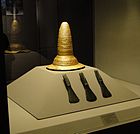


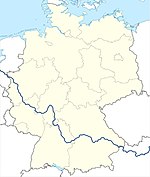

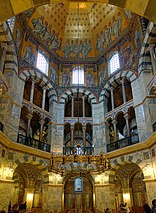
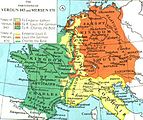
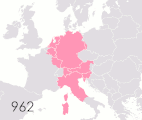





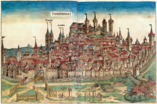








![Hans Memling's religious works often incorporated donor portraits of the clergymen, aristocrats, and burghers (bankers, merchants, and politicians) who were his patrons[121]](http://upload.wikimedia.org/wikipedia/commons/thumb/3/3c/Memling30.jpg/110px-Memling30.jpg)



![Adam Ries is known as the "father of modern calculating" because of his decisive contribution to the recognition that Roman numerals are unpractical and to their replacement by the considerably more practical Arabic numerals.[122]](http://upload.wikimedia.org/wikipedia/commons/thumb/1/1f/Ries.PNG/110px-Ries.PNG)
![Georgius Agricola was the first to drop the Arabic definite article al-, exclusively writing chymia and chymista describing chemistry.[123][124] He is generally referred to as the father of mineralogy and the founder of geology as a scientific discipline.[125][124]](http://upload.wikimedia.org/wikipedia/commons/thumb/6/63/Georgius_Agricola.jpg/110px-Georgius_Agricola.jpg)
![Hans Holbein the Younger is considered one of the greatest portraitists of the 16th century.[126]](http://upload.wikimedia.org/wikipedia/commons/thumb/d/d7/Hans_Holbein_the_Younger%2C_self-portrait.jpg/110px-Hans_Holbein_the_Younger%2C_self-portrait.jpg)
![Johannes Kepler, one of the founders and fathers of modern astronomy, the scientific method, natural and modern science[210][211][212]](http://upload.wikimedia.org/wikipedia/commons/thumb/7/74/JKepler.jpg/125px-JKepler.jpg)








